Previous Episode
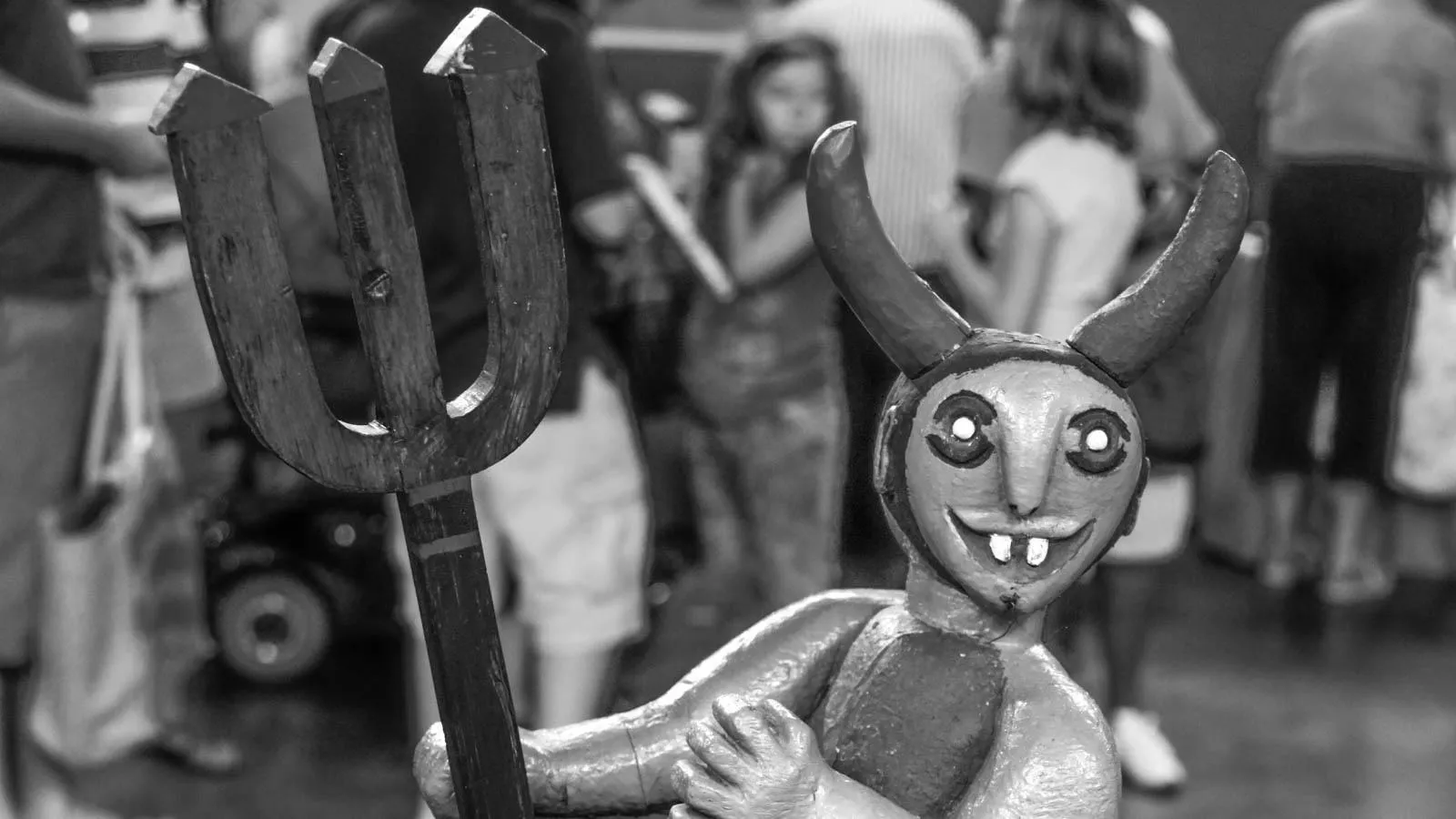
episode
Kooky & Spooky
Celebrate Halloween with thrilling and chilling finds, including a $250K - $350K treasure!
Next Episode
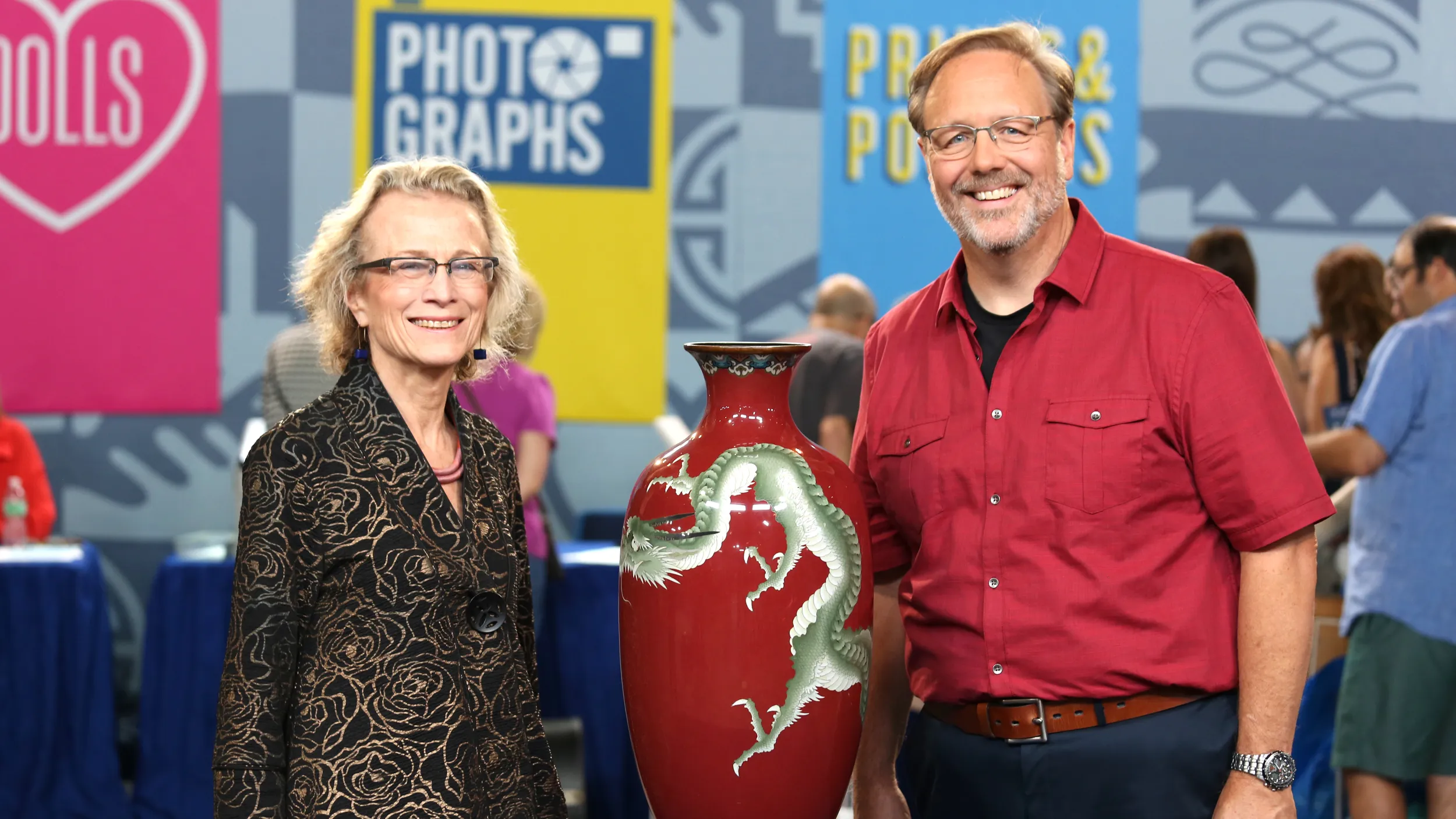
episode
Uncover an animal attraction to this collection of critters and creatures!
HOST: ANTIQUES ROADSHOW is wild about the creatures featured in this special episode.
GUEST: I pull him out every once in awhile and I just love him to pieces.
HOST: It's ANTIQUES ROADSHOW, “Somethings Wild.”
HOST: Artists have incorporated wildlife into their arts and crafts for thousands of years, and there's no denying the animal attraction that exists between collectors and those objects depicting our furry, feathered, and even scaly animal friends. In this episode, we've got a menagerie of treasures to share with you right now.
GUEST: I think it's a Colima dog, pre-Columbian art. She came to me with the name Spot. (appraiser laughs)
APPRAISER: Would that refer to this area here, I would think?
GUEST: Exactly. I bought it in 1999 from an art collector...
APPRAISER: You did?
GUEST: ...who did collect, so I felt like it was something special. I just... when I saw her, I just adored her. She was in an exhibition that I had seen her in, so...
APPRAISER: Oh, really?
GUEST: Yes. I've traveled to Mexico a few times. I've always liked pre-Columbian art. I'm fascinated by anything ancient. The collector said that she was pregnant and called her a she, and that her name was Spot.
APPRAISER: It suits her, I think. What did you pay for her originally?
GUEST: I paid a little bit over $3,000.
APPRAISER: So you saw it and you loved it, immediately you knew that... you knew that Spot was for you the minute you saw her.
GUEST: I had to have her, I had to have her.
APPRAISER: There's something that is really alluring about her. She's a Colima pottery dog from the Colima culture, which is in western Mexico. How old do you think she is?
GUEST: I feel like that she is old.
APPRAISER: She is from 200 B.C. ...
GUEST: Oh!
APPRAISER: ...to 200 A.D. She has wonderful patina overall. This mark here is a firing mark, it's an irregular darkening from when they fired her originally.
GUEST: Okay.
APPRAISER: But she has been around for centuries. The shape and the form of her is the very best of the dogs that I've ever seen.
GUEST: Oh, wonderful. She is kind of a famous dog. I was able to track her to find old collections that she'd been in. She's got great size, but what the collectors love is this big, fat body that she has. She's a hollow-bodied creation. If you look at how she's constructed, I mean, to build that cavity and have that weight rest on those legs the way that it does...
GUEST: Right.
APPRAISER: that's where the aesthetic symmetry and beauty of her comes in. Stylistically, she's stunning, she's worthy of being on display in any museum in the world.
GUEST: Okay, oh.
APPRAISER: And she's kind of a signature piece for the Colima culture. I mean, you could not find a better one. And I feel that in the marketplace today, she's worth $9,000 to $12,000 at auction.
GUEST: Oh, my gosh. (laughs)
APPRAISER: And just what a lovely piece of art she is.
GUEST: Oh, my word. Oh, my goodness. I want to pet her. (laughs)
APPRAISER: Go ahead.
GUEST: Spot, you're doing good. (laughter) That's fantastic.
GUEST: Well, it was in my wife's family for probably close to 50-plus years. Whenever we move to a different house or anything, we always pick one spot for it so it's seen.
APPRAISER: She acquired it from her dad, is that correct?
GUEST: Yes, she got it from her father. He collected a lot of everything, whether
it's folk art or American. He had quite a few pieces.
APPRAISER: Well, I love trade signs, and I think this is a particularly attractive one. It shows evidence of it having hung outside for a very long time, and that's part of its beauty. We could look at the quality of the carving, which is top-notch. It has beautiful form, it has wonderful surface. The surface on here appears to be very old. It's mounted on this beautiful wrought iron bracket. That in itself is a work of art. Whoever made this was very talented. It's very graceful, it shows considerable detail. And that, in combination with the sign, makes it, I think, for my money, quite spectacular. It's a little difficult to tell its origin. One clue might be the sort of wood that was used in carving of the fish. Well, we don't know, do we? It's all painted over. Layers and layers of paint. So we have to make a judgment as to its aesthetic appeal in determining how much money we think it's worth. So, do you have any idea about its value at all?
GUEST: Not really. We kind of guessed maybe around $7,000, something like that.
APPRAISER: Yeah. Well, I think that's not a bad guess. But I think, for auction purposes, I might suggest estimating it in the $10,000 to $15,000 range. I think that's conservative. There are certain situations where somebody might pay considerably more because it's such a terrific example of a trade sign.
GUEST: It is nice. We really like it.
GUEST: This is a Steiff teddy bear. My mother gave him to me. I was collecting toys at one time. I moved and lived on a boat and he ended up in a box, and I've just never had any place to put him. But I thought of him, I pull him out every once in a while, and I just love him to pieces.
APPRAISER: He is such an adorable piece. It's not one that we see very often. I have watched bears and collected and sold them over probably the last 30 years, and this is the first clown bear that I've seen up close and personal; I've only seen them in pictures. And as you pointed out, he has a Steiff button in his left ear. This particular one is a small button that is a double-F underlined button. It was started originally in about 1905 on, and he also further has part of his original tag, which, a lot of times, the tag is totally missing. That tag started being available in about 1908, and that went on for another approximately 15 years after that. So we can date him pretty well from those two things, and then we also look at his glass eyes. The first eye was a shoe button eye. This one is a glass eye. Glass eyes were available from about 1908 on as an upgrade, so he dates probably around 1915 to maybe as late as 1920. And he has his original hat. He is missing his ruff that he had around his neck, his little clown ruff, but he does have his hat with original pom-poms. And then my very favorite part: he's white. The very hardest color...
GUEST: Oh.
APPRAISER: to find in Steiff is white. I would clean him a little bit-- it would help his value. But in a retail setting, in a retail antique doll show, this is a bear that would probably be somewhere between $2,500 and $3,200.
GUEST: Oh, okay.
APPRAISER: So, he's a delight. Cleaning him up would add about ten percent.
GUEST: Well, what color is he supposed to be?
APPRAISER: He's white. I mean, that's part of where he...
GUEST: He's supposed to be white?
APPRAISER: He is a white bear, believe it or not. (laughter) He's had a little bit of a dusty background.
GUEST: I thought he was beige!
APPRAISER: No, he is a white bear.
GUEST: That is too funny.
APPRAISER: If he were a beige bear, he'd probably be worth not even half of that.
GUEST: Well, he's going to have a prominent place in our house from now on.
GUEST: As I understand it from my mother, it was made by my great-grandmother. It must be somewhere around a hundred years old.
APPRAISER: I've just never seen more wonderful objects so beautifully stitched. I want you to go home and insure it for $10,000.
GUEST: Wow.
GUEST: These were left to me by my ma.
APPRAISER: Well, it's an unusual collection of Dedham pottery. At auction, a small bunny plate like this is about $25. When you get into a larger plate with a floral design, these are worth about $75 to $100 apiece. Turkeys are about $100 to $150. Grapes are about $100 to $150. The moth plate is smaller, but still worth about, I'd say, $300 to $400, maybe a little bit more. And then finally, the turtle, I'd say on today's market easily between $500 and $750, could bring as much as $1,000.
GUEST: So I'll take care of the turtles.
APPRAISER: Take care of the turtles for sure.
GUEST: I got it at an estate sale. I paid something under $50.
APPRAISER: Ooh, wow!
GUEST: My husband thinks it's ugly, and...
APPRAISER: Oh...
GUEST: He didn't want me to bring it today.
APPRAISER: It's beautiful, though.
GUEST: I think it's beautiful.
APPRAISER: It was born as a vase.
GUEST: Oh, okay.
APPRAISER: In Japan. Oh, in Japan. In the early 20th century.
GUEST: Wonderful.
APPRAISER: If it didn't have a hole, it could have been much more valuable.
GUEST: About 20 years ago, my husband and I were in Rome, and we went into a small shop that sold movie posters, and this was folded up on the top of a stack, and it was in very bad condition, and the guy said, "You probably don't want to buy it because it's in such bad condition," and then we saw what the subject was, we said "Oh yeah, we do want to buy it." So he said, "Well, we can let you have it for $30." So we thought that was a pretty good deal, so we bought it and we've had it ever since.
APPRAISER: Well, I would say that anything-- taking a flier on $30, you're always going to win. Because to get something this big to put on your wall, it's going to cost a lot more than that, no matter what it is. But this in particular, King Kong, obviously one of the most collectible of that genre of film. And the images from these are so impactful. My favorite part about this, it's an Italian one-panel. Usually in the movie poster world, people want-- just like with first edition books-- they want the original country of issue. So, traditionally you would think that the U.S. would be the most desirable. But with King Kong, they're all desirable because the graphics are so amazing, and they did they did amazing stone lithography in Italy. And the other thing that's really nice about this one, we actually have the artist's signature up in the top-right corner, Olivetti, who's the Italian designer who did this poster. He's a known graphic artist, and even given the condition issues you have, this poster is somewhat rare, so it does come up occasionally. When it does, it almost always sells for around $6,000.
GUEST: Great. That's good to know. (laughter)
GUEST: It's been in the family for a number of years. It was one of those things where all of a sudden, no one wanted it anymore. (laughs) People aren't really into snake motifs so much, and it had to fit into the right place. So, decided it would be nice to have, and honestly don't know all that much about it except that I believe it's bronze. I believe it's from a French artist, maybe the early 1900s. That's about it.
APPRAISER: Well, it is very clearly signed on the base. It says Edgar Brandt, "E. Brandt," and Edgar Brandt was the leading metalworker in France starting in the 1920s up through the 1940s. He actually didn't die until 1960. His main body of work was wrought iron. He was the master of wrought iron in the '20s and '30s. He did all kinds of architectural work, he did doors, radiator grills, fences. He worked in Paris, he also worked in New York City. And this is one of the lamps that he made. This came in two sizes-- it came in this size and it came in a table size.
GUEST: No kidding.
APPRAISER: And sometimes they have this glass shade, and they also come with an alabaster shade. Alabaster is a soft stone that's translucent.
GUEST: Right.
APPRAISER: Brandt made this part, this is made out of bronze, and the shade was probably done by the Daum glass factory. Daum Nancy is in the eastern part of France by the German border. And this is from the Art Deco period, from the 1920s. "Art Deco" term comes from an exhibition that was held in Paris in 1925. And Brandt, as a matter of fact, designed the entrance gates to that fair.
GUEST: No way.
APPRAISER: This is like his most famous, famous piece. And it has a title... I know my French is awful.
GUEST: That's okay.
APPRAISER: And we're going to get all these letters and emails. It's called "La Tentation"-- "The Temptation," or "Seduction."
GUEST: Oh, well, makes sense.
APPRAISER: So it's this wild snake coming out of a basket down there.
GUEST: Right.
APPRAISER: The 1920s is when Howard Carter found King Tut's tomb...
GUEST: Right.
APPRAISER: So there was a tremendous amount of interest in things that were Egyptian.
GUEST: Okay.
APPRAISER: They sometimes called it Egyptomania. Very, very desirable, it's very rare, lots of fakes, lots of reproductions, so it's nice that the one you have is a real one.
GUEST: All right! That's the good part, right?
APPRAISER: That is the good part. And there's a better part.
GUEST: Okay.
APPRAISER: In terms of the value, the condition on this is a little shaky.
GUEST: Right.
APPRAISER: It has some problems here with this green. Bronze is mainly copper, so when it deteriorates, it turns this green.
GUEST: Mm-hmm.
APPRAISER: It's the reason the Statue of Liberty is green. In a gallery setting, you're talking about $35,000 to $45,000.
GUEST: No kidding! (chuckling): Wow! That's incredible. So if you were to see one like this in, like, pristine condition, what is that then?
APPRAISER: There was one at auction that brought $62,000.
GUEST: Wow.
APPRAISER: So I assume the condition was better. It also had a very strong provenance, which can be important. But I think $35,000 to $45,000 is pretty good.
GUEST: That's incredible. That's pretty good for a snake lamp.
GUEST: I don't really know much about it, just that it's a bronze lion. I think my dad called it a yawning, a yawning lion.
APPRAISER: So it was something that's been in the family, or...?
GUEST: Yeah, my grandfather purchased it at some gift shop years ago, and then after my grandparents passed away, then my dad ended up with it, and it's always been in our house as long as I can remember, and I always loved it.
APPRAISER: So, have you seen that it has a signature on it, or...?
GUEST: Well, I saw one of 'em, I didn't know there was two.
APPRAISER: So, it is... it is signed. It's signed right here, Anna V. Hyatt.
GUEST: That's the one that I saw, yeah.
APPRAISER: And that's for the sculptor Anna Hyatt Huntington.
GUEST: Uh-huh.
APPRAISER: So, American sculptor, born in 1876 and died in 1973, so quite a long life.
GUEST: Yeah.
APPRAISER: The other mark-- I'll show you here-- is actually for the Gorham Foundry in Providence, Rhode Island.
GUEST: Oh, really?
APPRAISER: So they would have been the company that cast the bronze.
GUEST: Okay.
APPRAISER: It's number 39, this is the 39th one to be cast. So this is actually not a lion, but a tiger.
GUEST: Oh, a tiger, okay.
APPRAISER: A tiger, so its title is "Yawning Tiger."
GUEST: Okay.
APPRAISER: And Anna Hyatt Huntington was very interesting, one of the most prominent woman sculptors of her generation, working in America. And really interested in animals, and spent a lot of time observing animals and getting them their activity, and what's, you know, amazing about this is there's so much life and energy in the way it's been sculpted. You can really see that it's, you know, stretching from sort of tip to tail here. It was an early casting, probably cast in the 19-teens. And for viewers of ANTIQUES ROADSHOW this is actually a familiar subject, because this same subject was filmed about eight years ago.
GUEST: Really?
APPRAISER: What's different is that that was a smaller version. This is larger. At the time, it was estimated at between $8,000 and $12,000.
GUEST: Really?
APPRAISER: The market for the one that was filmed has probably dropped a little bit. They've been selling more in the $5,000 to $7,000 range.
GUEST: Oh, okay.
APPRAISER: This size was cast... the records indicate that there were about 118 cast, the smaller version there were about 350. In this case, size matters.
GUEST: I guess!
APPRAISER: So fewer, and I would estimate for auction in today's market this to bring between $25,000 and $35,000.
GUEST: Really? Oh, my gosh.
APPRAISER: Yeah.
GUEST: That's exciting.
GUEST: This is the story of... Aesop's fables story of Belling the Cat. So, basically, the concept is the mice all thought that it would be good to get together and figure out how to destroy or get rid of their threat, and they thought putting a bell on the cat was the idea, and then the concept is "Who will bell the cat?" and the moral of the story is it's easier to have a plan than to follow through sometimes.
APPRAISER: Well, that's for sure. So do you know who painted this?
GUEST: What we found, and it took us quite a while because the signature is difficult to read, Philimont Léon Couturier, if I'm saying that right-- it's, like, French for dressmaker-- is who we think is the artist.
APPRAISER: Well, I don't know if I can improve on your French. I think it's Philibert Léon Couturier.
GUEST: Thank you.
APPRAISER: That's my schoolboy French coming to the fore there. And as you say, it is signed. I mean, it's rather hard to see right down here, just below a rather troubling bit of restoration there. I've seen more sympathetic restoration done in the past over this poor little rat's tail. And, of course, this is an oil painting by Couturier, oil on canvas. He was an interesting artist. He was known amongst his friends as the king of the poultry house, because he was best known for doing chickens and ducks and such like. Here, he's doing rats. This may well be his rat period, I don't know. As you say, here's a chap having the great idea, "We've got a belligerent cat on our hands, let's tie a bell around him," and all these chaps are thinking, "That's a great idea, but I'm not sure I want to do it." And you have the sense that there's quite a political subtext going on here as well...
GUEST: Mm-hmm.
APPRAISER: ...particularly given the time when it was painted in France. Couturier was probably having a go at some of the politicians of that time as well. They have great ideas, but they can't really follow through and nobody really wants to do them. But it's an interesting subject, for sure. Where did you acquire it from?
GUEST: Well, I inherited it from my uncle. I don't know where exactly, someplace in the panhandle of Florida is where he had gotten it from-- in an antiques store, I think.
APPRAISER: Right, well, it's certainly an image that I'm sure I'll be remembering long after I've gone tonight. (laughs) Have you given any thought as to what the value of it might be?
GUEST: I really don't have any idea.
APPRAISER: Well, at auction, the ducks and the chickens, they're not doing as well as they used to. They usually sell for around about $1,000 or so. But I actually found one not dissimilar to this, where it sold at auction for a little over $3,000.
GUEST: Oh, wow.
APPRAISER: And I would feel pretty comfortable putting an estimate of $3,000 to $5,000 on this work. I think because it's so unusual, I think you would certainly have buyers for it, although I know there are a lot of people out there probably watching this evening who aren't too fond of rats...
GUEST: Exactly.
APPRAISER: ...so it might not be what they want hanging on their wall.
GUEST: Well, this is my Harper's $500 little brown jug that has been in my family four generations, I believe, and it's now come to me. I've done very little research. All I know is that it was used, I believe, for alcohol, and that the $500 referenced some obtaining of a liquor license at the time.
APPRAISER: The Anna Pottery Company was started by two brothers. Their names were Kirkpatrick, in Anna, Illinois, and they were in business from 1850s until the 1890s. And they made stoneware pottery, and one of the things that was so unusual about them was that they used their pottery to express their political beliefs.
GUEST: Okay.
APPRAISER: And lots of times, the sayings on their pottery had something to do with temperance...
GUEST: Mm-hmm.
APPRAISER: ...political corruption. In this case, we have, of course, the serpent, the snake watching the bottle, and on the front there, it says, "Harper's $500."
GUEST: Mm-hmm.
APPRAISER: And as you go around the jug, it says, "little brown jug," and then it's got the date, 1883. That was a license law. It was called a high-tax law or a high-license law in Illinois that was passed in 1883, which made it very difficult for anybody to get a new saloon license. The people that collect American stoneware pottery are crazy about Anna Pottery. They did pig flasks with maps on them, they did jugs bigger than this with multiple snakes on them. This particular one is an unusual form because of the size, but also because of the pinched form. When it was made, it was made round and then they pinched it in to make it more of an oval shape, and if you'll look on the bottom, it says, "Anna Pottery..."
GUEST: Right.
APPRAISER: and the date, 1884. I read that the brothers at the pottery actually had a snake pit there.
GUEST: Really?
APPRAISER: And they used to go over and study the snakes, I guess, before they would model them.
GUEST: Uh-huh.
APPRAISER: And they would go out and sell their wares and actually take the snakes with them.
GUEST: Wow!
APPRAISER: So, have you had any ideas about what you thought it might be worth?
GUEST: No, just because... there's not really anything conclusive about this particular style that I found.
APPRAISER: Well, one just like it sold at auction two years ago for $10,400.
GUEST: You're kidding?
APPRAISER: No.
GUEST: Okay, that's much more valuable than I would have thought, okay.
APPRAISER: Yeah, for insurance purposes, you probably could put $12,000 on it.
GUEST: Okay.
APPRAISER: It's fantastic, it's a rare form. Not only that, but it's in perfect condition. Thank you so much for bringing it in, it made my day.
GUEST: I got this at an auction about the middle of the '70s. It was early in the evening and I got the bid.
APPRAISER: And what did you pay?
GUEST: $250.
APPRAISER: Well, this is Cartier Paris. The nose is one solid emerald. It has beautiful diamonds. And today, if you had to buy it at auction, you'd be raising your hand upwards of $6,000.
GUEST: Oh, my Lord!
APPRAISER: That's right.
GUEST: My father bought this in a western Iranian village.
APPRAISER: Now, this is made in Iran. What we call Iran today would have been called Persia back then. Probably made in the 1930s or 1940s. And these design elements are mostly what we'd call stylized fish.
GUEST: Oh, I'll be. Yeah.
APPRAISER: And this is meant to be a reflecting pond with the fish in and around it. Today, this would probably bring about $600 to $800 at auction. So it's turning out to be a pretty good buy.
GUEST: Yes, excellent. Well, thank you so much.
APPRAISER: You bet. Nice to see it.
GUEST: Well, my mother bought it for me in 1962, at the Shearwater Pottery in Biloxi, Mississippi. She was on a vacation there. And I've had it ever since.
APPRAISER: You've got the original brochure that came with it when it was bought in 1962, and I love things like that. You know, the brochure in itself is not worth a lot, but it just enhances the value historically and maybe slightly monetarily. Our guess is that this would probably sell at auction for between $2,000 and $3,000.
GUEST: Ooh, very nice.
APPRAISER: If we could prove that Walter Anderson did it, it might be more on the upper end of that range.
GUEST: Thank you very much. My mother would be really pleased.
GUEST: Well, this picture belonged to my great-aunt, and it was passed down to my mother, and I've had it in my house ever since then. I think it's by Rosa Bonheur. I had done a little reading and I think she was... got in trouble for wearing pants back in the 1800s.
APPRAISER: She didn't just wear pants; she wore working man's jackets, she had short hair, and she would go around smoking cigarettes...
GUEST: (laughing): Oh.
APPRAISER: ...and cigars and pipes. It's signed down here with the initials "R.B.," and she was primarily known as an animal painter. She also did some sculpture, and she was best known for doing horses. Although Rosa Bonheur did not date her paintings, this is probably from the second half of the 19th century. This is a very unusual perspective, to have the donkey's face so in your face, so to speak. I think if you were going to sell it at auction, it would be something like $10,000 to $15,000.
GUEST: Oh, wow, that's great.
GUEST: All I know about it is it belonged to an aunt of my mom who had no children, and so passed on her goodies to various nieces and nephews. She was a wealthy woman who traveled in Europe a great deal, and she was glamorous. So then it came to me, and I've always been fascinated with it.
APPRAISER: And how long have you had the ring?
GUEST: Probably since the 1950s.
APPRAISER: So you think she probably acquired it sometime then or earlier?
GUEST: Oh, I think much earlier, I'm pretty sure.
APPRAISER: It's a really lovely, lovely example of what we call a heart ring, or a sweetheart ring, and it's a Georgian ring, so it comes from England. This piece dates anywhere from about 1840 to maybe 1850, 1855, thereabouts. And so it has this classic heart-shaped motif. Sometimes they're called lover's rings or betrothal rings, so it's like two hearts... the hearts coming together. And it's not unusual to sometimes have the stones that are in the center here be the birthstones of the couple. But what's unusual about your particular item here is that instead of a birthstone, it has these two small carved cameos. One is carved opal and the other is carved hardstone. The interesting thing about this is that normally, we see portraitures or faces or sometimes the man in the moon as subject matter. This has a pair of monkey faces. (laughing) I have to say when I saw this, I was just blown away, only because not only was it so interesting, but it's so rare. It has this great bit of whimsy to it. It was obviously a custom piece. And if we turn the ring a little bit, we can also see that it's surrounded by emeralds and rubies, and the back of the piece too is quite extraordinary. It has this beautiful fluted background behind it as well, which is very typical of Georgian rings. This is incredibly rare. I have never seen one like this. My other fellow appraisers have never seen one like this either, and we all agreed it's sort of the bee's knees in terms of...
GUEST: (laughing): Or the monkey's uncles.
APPRAISER: Exactly, I'm the monkey's uncle. And so in terms of a replacement value, if you went into a very good estate jewelry shop, you could expect to pay close to $20,000 for this. I know. This is remarkable.
GUEST: Heavens!
APPRAISER: This is one of the most interesting pieces I've seen on the ROADSHOW in a long time. It's absolutely phenomenal.
GUEST: Thank you!
APPRAISER: It's monkey time!
GUEST: I'm a little verklempt. (laughing) I'll never wear it again!
APPRAISER: Just be more careful when you wear it, that's all.
GUEST: (laughing): Yeah.
GUEST: Well, it belonged to my great-aunt, and when the last one passed away, she left it to me. And as my brother Jay and I were growing up, we were always told, "Don't go near the lamp" when we were visiting at their apartment. So it's kind of funny, you know, as we were little, we thought, "Oh, that horrible, horrible lamp," you know, and then as we got older, we've come to appreciate this.
APPRAISER: Do you know who made it?
GUEST: When we looked on the top, we found the name Handel.
APPRAISER: Mm-hmm, that's right. And when did you find that?
GUEST: This morning.
APPRAISER: Oh, I love that.
GUEST: Before we left, you know...
APPRAISER: That's just great, okay. Well, that is the name of the company that made this lamp.
GUEST: Okay.
APPRAISER: And the company was based in Meriden, Connecticut. It went into operation in 1885. And at that time, Mr. Handel was in partnership with a person named Mr. Eydam, and they worked together until about 1893, and then Handel bought the company from Mr. Eydam and owned it by himself. And this lamp was made in about 1910. What they were known for, really, was making a lot of decorative objects, but the thing that they really were known for, and what we think of them for more than anything else today are their lamps, their decorative lamps. This lamp is a reverse painted lamp. It actually has a name, it's called "Jungle Birds." And you can notice the birds right on the front, these beautiful parrots. And we can turn this together. And here's another bird on the back of the shade. Now, when I say the lamp is reverse painted, it's been painted on the inside. On the outside, we have what is known as a chipped surface. Sometimes people call it chipped ice. They used a special process to create the impression of frost on a window pane. They made it by sandblasting it, covering it with fish glue, drying the fish glue, then baking it in a kiln at 800 degrees Fahrenheit. And then the glue would fall off the shade, taking with it pieces of glass, thus creating this surface. Handel was also a contemporary with Louis Comfort Tiffany, and Handel's company did actually make some leaded glass lamps. But the reverse painted lamps are the more desirable lamps. And this happens to be one of the most desirable lamps...
GUEST: Oh my gosh.
APPRAISER: ...that they made. The lamp base is not made of bronze. Handel's bases were usually made of white metal. And the bulk of the value, in fact, 95% of the value, is the shade. This particular lamp, in today's market, would sell for between $15,000 and $20,000.
GUEST: Oh, wow.
APPRAISER: A couple of years ago, this lamp actually would sell for a little more. It actually sold for $30,000. But for some reason, the market has softened over the past few years. But I have every confidence that it will strengthen again and the price will go up in value. And it's really a wonderful lamp, and I'm so glad that you brought it in.
GUEST: I inherited them from my Aunt Gerry and Uncle Ralph, and they were a very wealthy couple. They didn't have any children. They did a lot of world travel, and when they passed away, I got the little pigs.
APPRAISER: How long have you had these little pigs?
GUEST: Probably 20 years.
APPRAISER: It was a 1933 film, and it won the 1934 Academy Award for best short cartoon. It's a classic Walt Disney film. And these were made to market with the success of the film.
GUEST: I thought that maybe they might be Steiff, because they came from Germany.
APPRAISER: And you saw the "Made in Germany" on the boxes...
GUEST: Yes.
APPRAISER: They're not Steiff, but they're another company from Germany that's just as interesting as Steiff-- it's Schuco. You can see here at the base of the foot, it says Schuco. Schuco was a company from Nuremburg. They started making toys in about 1915. They made teddy bears. They also made a lot of windup toys. And by the '30s, they made these great Walt Disney Three Little Pigs. We have Fifer Pig on the end there, next to you. We have Fiddler Pig in the middle. And do you know the name of this guy?
GUEST: Drummer.
APPRAISER: He's Practical Pig. Now, Practical Pig was the pig that had the brick house that the wolf couldn't blow down. And in the movies, Practical Pig plays a piano. But it would be hard for the toy producers to manufacture a piano. So, they turned Practical Pig into a drummer. The other great thing is the fact that you have all the original boxes. And each box, the corners are crisp, the labels are perfect. Each one of them works, and all the original keys are there, too. They're just in exceptional condition. This set, at auction, would be $2,000 to $2,500. Let's wind one of these guys up.
(tinny drumming)
GUEST: They're cute, they're very cute. I like them a lot.
GUEST: Well, it's shown in an old tin type, somebody in the family's got that. It's been in the family for a long, long time. I grew up with the guy sitting on the top of the piano. But after we were married, when it finally came to me, along with this piano, my wife was afraid to let it stay out. So my kids haven't had a chance to grow up with this the way I did. It's been in the closet for the last 16 years.
APPRAISER: How far back in your family can you put it?
GUEST: At least as far back as my great-grandfather.
APPRAISER: It's actually pretty special. I'm going to look at the mark first, because the mark is going to explain a lot.
GUEST: Uh-huh.
APPRAISER: And I'm curious as to have you ever tried to read the mark before? Or did you even know there was a mark on the bottom?
GUEST: Well, I knew there was a mark. And somebody gave my mother a book about Bennington Pottery.
APPRAISER: Right.
GUEST: So, we've got some idea that it's more valuable.
APPRAISER: Well, this mark actually says Fenton, Lyman and Company. Now, you're correct in that it does come from Bennington. And the Fenton Lyman Company was, at that point in time, in 1849, a manufacturer of pottery in Bennington.
GUEST: Mm-hmm.
APPRAISER: And they made these high-lead glazed, which they actually called flint glazed, animals. They made utilitarian wares like kitchenwares. They made things like picture frames and flasks, and they made these wonderful animals. Now this on the top here is actually where they've taken little bits of clay and they've chopped it up. In fact, they call this technique coleslaw.
GUEST: Uh-huh. Coleslaw?
APPRAISER: It's really, really fine quality. Little tiny, tiny chip on the back corner there.
GUEST: Yeah, Mom told me about that one. Before it came to us, a cat was running around on top of the piano and knocked over a vase, and took that little chip out of it.
APPRAISER: These have always been desirable. If you go back to the 1920s and 1930s and '40s, there were collectors that desired these back at that point in time.
GUEST: Mm-hmm.
APPRAISER: And even more so today. Now, these were made in pairs originally, so there was a left and a right, if you can believe it...
GUEST: Uh-huh, yeah.
APPRAISER: And you just have one of a pair. If this came up at a well-publicized auction, I would expect it to sell in the range of $4,000 to $6,000, conservatively.
GUEST: Uh-huh.
APPRAISER: And certainly to insure it, as much at $7,500 or $8,000 wouldn't be unreasonable.
GUEST: (sucks in breath) Ouch.
APPRAISER: (laughing) So is it going on the piano or is it going back in the closet?
GUEST: I'm afraid it's going to go back into the closet.
GUEST: I believe it's an Escher print. I found it in the alley in my backyard.
APPRAISER: People know Escher for these interlocking shapes, and he's really an artist that did most of his work in printmaking. So as a group, this set of four woodcuts at auction, the price would be $3,000 to $5,000.
GUEST: Oh wow, that's fantastic.
GUEST: I guess it's either a prawn or a shrimp. It was dug out of a box of trash that my brother brought home about 30 years ago.
APPRAISER: This is a 19th century Japanese bronze figure of a crayfish.
GUEST: Okay.
APPRAISER: And at auction today, this piece would sell between $3,000 and $5,000.
GUEST: Wow, that's... that's a shock.
APPRAISER: It's great-- it's 18-karat yellow gold.
GUEST: Oh, cool.
APPRAISER: I mean, everybody loves birds.
GUEST: Yes.
APPRAISER: Did you know it was Cartier?
GUEST: Oh, no!
GUEST: I bought it at a farm auction in Wisconsin about 40 years ago. It was advertised as guns and household, so I went for the household and there were a lot of people there for the guns, and not so much for the household. And I had this paddle, and I just held it up because I really wanted it, and I never put it down. So I think I paid $20 or $25 for it.
APPRAISER: So you just kept your paddle up so everybody in the room knew that you wanted this.
GUEST: And they told me not to do that afterwards because I might've raised the price.
APPRAISER: But yet you still got it for...
GUEST: I wanted it.
APPRAISER: ...$25. Yeah. How long ago?
GUEST: 35, 40 years ago.
APPRAISER: It's a spectacular example of an antique advertising glass globe. Now, the White Elephant Brand Coffee and Tea Company, pieces are very scarce. We could put the date anywhere between 1909, 1910, as high as possibly the early 1920s. You just don't see much. We've seen some small cans before, but never have we seen an advertising glass globe like this. What's great is it has the advertising for the coffee on one side, and then the tea on the other. The condition, as far as I can see, is absolutely perfect. The color appeal is off the charts. Any idea what this is worth?
GUEST: No. (chuckles)
APPRAISER: Well, again, we've never seen this piece before come through Antiques Roadshow, or anywhere else. And I'd put an auction value on this of $2,500 to as high as $3,500.
GUEST: Wow. That's great, I loved it.
APPRAISER: It's a wonderful, scarce piece.
GUEST: I knew I was right to hold that paddle up.
GUEST: It was my mother-in-law's, and it was given to her by her family, who had got it in about 1870s, and the Indian who gave it to them said that it was in her family, the Indian's family, for 75 years. So, it's probably about 1825 or somewhere in that region. Now, I don't know, that's... that's a story that...
APPRAISER: And where was this person living at the time they received it?
GUEST: They had a trading post at Isleta Pueblo, in New Mexico.
APPRAISER: The Isleta Pueblo is sort of the central pueblo of the Rio Grande region.
GUEST: Yeah, yeah. So about 20 miles south of Albuquerque.
APPRAISER: You're absolutely right. And "Isleta" stands for "little island."
GUEST: Little island.
APPRAISER: Well, what you brought to us today is really quite extraordinary. We've never collectively seen one in this format before. The Isletas, during the Pueblo Revolt of the late 1600s, actually fled to the safety of the Hopis. And when they came back to repopulate their village, they brought their Hopi spouses with them. And then in the mid-1800s, a few people from Laguna Pueblo and a few natives of the Acoma Pueblo moved in there. So, your pot kind of reflects the diversity of all the different tribal attributions, because it's not a clear case of who made this. And this pot represents a time period of probably the 1860s to 1880s. Now, it's a canteen. It's a wonderful pig. There would have been a stopper in there, which would of course would have not been a cork but a corn cob. And it has the assets of the Rio Grande Pueblo in terms of the clay. It has a finish that we refer to as a slip glaze. And it also has these deer on there, which people like to attribute to the Zuni with these heartline indications in them. But, I actually feel like there might have been a Hopi hand involved in this.
GUEST: You think so?
APPRAISER: So it was a collaborative influence. Have you ever tried to establish a price on it?
GUEST: A friend of mine who collected Indian stuff and sold it gave me a price of, he thought it was about $20,000.
APPRAISER: Well, an easy auction estimate for this piece would be $25,000 to $35,000.
GUEST: Is that right?
APPRAISER: It is quite extraordinary. Just form and function, and the figural aspect of it, he's a very striking canteen.
GUEST: My great-uncle Lavern Meyer was an artist with Erie Lithograph Company back in Erie, PA, back in the '20s to maybe '40s or '50s, and painted a collection of circus artwork that was then passed from when he passed away to my grandmother, my grandmother to my father, and my father to myself recently. It's lived in attics, in basements. And we framed a couple pieces to hang up in our house. It's been in the family for a long time.
APPRAISER: So it's your great-uncle.
GUEST: Yes.
APPRAISER: And his name was Lavern Meyer.
GUEST: Correct.
APPRAISER: So one of the first things I'd actually love to do, and I am privileged and honored to do it, is introduce the world to Lavern Meyer. And the reason I say that is, the artists who designed so many of the American circus posters largely labored in almost absolute anonymity. They were craftsmen, and none of these posters are signed, as you see.
GUEST: Right.
APPRAISER: And most of the posters that I come across in my daily job for circuses are not signed. So the fact that we now know through your family that the artist was Lavern Meyer actually adds something immeasurable to the canon of circus posters.
GUEST: Oh great.
APPRAISER: So, world, meet Lavern Meyer. Lavern Meyer, the world. That's the first thing, which I think is great. Now you said he worked for the Erie Lithograph Company.
GUEST: Yes.
APPRAISER: And the Erie Company was one of the great American lithography companies. But one of the greatest American lithography companies was the Strobridge Company.
GUEST: Okay.
APPRAISER: And this poster was actually printed by the Strobridge Company.
GUEST: Oh, okay.
APPRAISER: So it would appear that your great-uncle actually worked for several different lithography houses-- certainly the Strobridge Company as well as the Erie Company.
GUEST: Oh, very neat.
APPRAISER: And it's interesting, because a lot of times we come across family stories that are a little bit vague or a little bit foggy, or maybe not entirely accurate. It's sort of like a big game of historical telephone...
GUEST: Yes.
APPRAISER: ...where information gets lost and twisted. But we know he worked for at least two different companies.
GUEST: Huh.
APPRAISER: And this is original artwork for posters. And the word for that is maquette.
GUEST: Okay.
APPRAISER: Many, many years ago, when someone else came in with maquettes, I pointed out that for some unexplainable fluke of the market, the original artwork never seemed to be worth as much as the posters were themselves.
GUEST: Oh, interesting.
APPRAISER: But in this case, I think it's slightly different. As they are sort of family heirlooms, do you have any idea of what they might be worth?
GUEST: I have not the faintest idea.
APPRAISER: Well, it's very difficult to put a value on original artwork that until this very day was basically anonymous. But we look at these pieces, and here's what I see. I see the Ringling Bros. and Barnum & Bailey poster, which according to my research was printed in 1931.
GUEST: Okay.
APPRAISER: And Ringling Bros. really is the gold standard name for circuses. I think artistically, this is really one of the nicest images that you have. Yes, there's a little damage down there. Not great, but I would say at auction that the Ringling Bros. is worth $800 to $1,200.
GUEST: Oh, great.
APPRAISER: Then we have the Al G. Barnes and the Russell Bros. Circus. They're not as famous circuses. The images are great though, and I think together the two of them are worth $800 to $1,200.
GUEST: Okay.
APPRAISER: And then finally we have the other Ringling Bros. poster, which is
smaller. I haven't been able to establish an exact date for it, but it is a dramatic image. And on this I'd put an estimate of $600 to $900.
GUEST: Nice.
APPRAISER: But that's a lot of numbers. I'm going to sum it up for you. The auction estimate for these four pieces together would be between $2,200 and $3,300.
GUEST: Oh, excellent news. Yeah, thank you.
APPRAISER: This is sort of new ground. Now that we know who the artist is, there's a chance that at auction they would sell substantially higher than that.
GUEST: Oh, excellent news.
GUEST: I bought it at auction in 1993 in Lexington. My husband and I both are interested in Asian things, and so I had the opportunity to buy it and I thought it was a good price.
APPRAISER: Okay.
GUEST: And I didn't really know for sure what it was, other than I thought it was probably some kind of jade, but it was listed as spinach nephrite.
APPRAISER: What did this cost, do you remember?
GUEST: Well, I can't really remember, and I couldn't find a receipt for it, but I want to say maybe about $800.
APPRAISER: Okay. This is made of jade, which you know.
GUEST: Yes.
APPRAISER: It's carved on the interior with lotus flowers and lotus leaves and branches. And it's a real profusion of that. But it is recessed about three inches, so it's a shallow wash basin. So this actually would have sat on a wooden stand...
GUEST: Mm-hmm.
APPRAISER: And would have had water in it. Now, the lotus decoration in the center, and also the lotus vines and chrysanthemum on the border which are accompanied by bats, are all auspicious symbols that have connotations of good luck and prosperity. The color of the jade itself, which is technically called nephrite, often is referred to, because of the dark green color, as spinach, just because of the color.
GUEST: Okay, the color.
APPRAISER: Now, the fact that this is a wash basin means that this preceded the days of running water. So that helps to date it.
GUEST: Okay.
APPRAISER: My sense would be that this was made in China...
GUEST: Mm-hmm.
APPRAISER: ...during the Qing dynasty in the late 18th, early 19th century. The carving is certainly above average. What are you using it for?
GUEST: I use it for flower arrangements. It sits on my table at Christmas with protea in it, red protea.
APPRAISER: Okay, one of the things I've noticed is there's some candle wax. You're not putting candles in it?
GUEST: Well, I've had candles next to it, and...
APPRAISER: I would say that's probably not a good idea.
GUEST: (laughs): Okay.
APPRAISER: Because one of the things that can happen is if this, for some reason, were to get hot...
GUEST: Uh-huh. It could crack?
APPRAISER: ...it's possible that this could crack. Because you'll notice that, for instance, there's a fissure running right here through this section.
GUEST: Right. Okay.
APPRAISER: And then it's possible that could develop into something, because those are the areas of weakness.
GUEST: And that's part of the natural...
APPRAISER: That's the natural features in the stone. Now, one of the things that's also here that's nice, is you see that there's the continuing lotus scroll on the exterior. Because that part of it, as it sat in the basin, would have been visible...
GUEST: Mm-hmm.
APPRAISER: ...from the side. I would recommend an insurance figure for this of about $25,000.
GUEST: (laughing): Oh, my god. Okay.
APPRAISER: Okay?
GUEST: Wow.
APPRAISER: $25,000, maybe even $30,000.
GUEST: Whoa. Oh, my gosh.
APPRAISER: That's what you would be expected to pay if you went to an antique shop that dealt in Chinese art...
GUEST: Really?
APPRAISER: ...and bought this today.
GUEST: Wow, that's amazing.
APPRAISER: Okay?
GUEST: Oh, I'm excited.
HOST: Those baths turned out to be lucky indeed. Coming up...
APPRAISER: It's got quite a wonderful ensemble on it. He's just about to cut into this melon, and drooling.
GUEST: I think he's already had some, or he's anticipating...
APPRAISER: Yes.
HOST: Check out this monkey painting, a gift from his uncle, right after this.
GUEST: This painting used to belong to my great-uncle George, who had perhaps the best job in the world-- he owned a brewery up in Lancashire in the north of England. And it passed from him to his daughter, who was my mother's cousin, and then from my mother to me.
APPRAISER: Do you have any idea where your great-uncle got the painting?
GUEST: I don't have any idea at all.
APPRAISER: Have you ever found a signature on it?
GUEST: I hadn't before today, or any sort of means of being able to discover who the artist was, and still no signature that I'm aware of.
APPRAISER: We took the paper which covered the back of the picture, and we were lucky enough to find a label that said, "G. Lance" with the title "Black Cap, Monkey, and Fruit." So I did a little checking, and there is a Victorian still-life painter named George Lance. He was born in 1802 in Essex. And he showed artistic talent quite early on. And one day he encountered Charles Landseer, who was drawing in the British Museum. And he asked Landseer who his teacher was, and he said it was Benjamin Haydon. And the very next day, Lance went off to meet with Benjamin Haydon and ended up becoming his apprentice for about seven years. So he studied with him and at the Royal Academy as well. One of Lance's early patrons was a man named Robert Vernon. He was a big art collector. And his collection became what was to become the Tate Museum. And one of the pictures he bought from Lance was a picture called "The Red Cap" and it shows a monkey wearing a red cap. "The Red Cap" was painted in 1847. There's really some wonderful detail here with the hatpin and the peacock feather, and just the embroidery here on the jacket. He's got quite a wonderful ensemble on, and he's just about to cut into this melon, it looks like, and drooling.
GUEST: I think he's already had some, or he's anticipating...
APPRAISER: Yes. So the medium is oil. It's painted on panel, which is basically a piece of wood. And you have it framed under glass, which keeps it lovely and clean, but actually, to see the painting in the best possible way, I would recommend removing the glass. When was the last time you had the picture appraised, and for how much?
GUEST: I want to say it was about three or four years ago, and it was appraised, because nobody knew anything about its provenance, at, I think, $2,000 to $3,000.
APPRAISER: George Lance was instrumental in sort of bringing still-life painting back into the forefront in the 1830s and 1840s. He died in 1864, but had quite a successful career. And in today's market, the 19th century painting market is not as strong as it had been. And I think at auction it might be $20,000 to $30,000 in today's market.
GUEST: I think it would be appropriate to say, "By George," wouldn't it? (chuckles)
HOST: I'm Mark Walberg, thanks for watching our special episode of "Somethings Wild." See you next time on ANTIQUES ROADSHOW.
GUEST: I have brought an original artwork by Ruby the elephant, who was the painting pachyderm. She resided at the Phoenix Zoo in Phoenix, Arizona for over 25 years, until her death in 1998. This piece I got in an auction, I actually did a book bid in 1991. And it was done for a fundraiser for Arizona State University School of Art.
APPRAISER: It's a very fun piece of pachyderm art, as you said. This actually became a bit of a thing after Ruby started this. She's actually one of the very first elephants to become famous for painting. It's usually painting on canvas, but you brought us a ceramic charger here. And if I were to advise you on an insurance value, I would put an estimate of $1,500 on it.
GUEST: That's wonderful. And I'm just happy to have this on display in my home, and I thank you.
GUEST: I got this bowl from my mother. She's had it about 30 to 40 years. She picked it up in a garage sale. I want to say she paid about five dollars for it.
APPRAISER: Okay, and when you brought it in this morning, actually it was fairly tarnished.
GUEST: Yes, it was.
APPRAISER: And you, as a Girl Scout, went into the ladies room and borrowed some toothpaste...
GUEST: Yes, I did.
APPRAISER: ...and a did a little quick polish on it.
GUEST: Actually I was told that by a Girl Scout.
APPRAISER: Oh, okay.
GUEST: And she loaned me toothpaste to clean it, yes.
APPRAISER: Great.
GUEST: I know that it was a trophy from the Westminster Kennel Club from 1883, and that's really all I know about it.
APPRAISER: If we look here on the bottom, this is all hand-hammered. And there's here the mark for Whiting, which is a company, an American company, that started in 1840 and then purchased by Gorham in 1926. And then we have the retailers in New York. Now, dog and other related trophies are very desirable in the marketplace. I think in today's market, you easily could be $2,500 as a retail price.
GUEST: Thank you, that's awesome.
GUEST : Well, I really don't know all that much about it. A friend gave it to me.
APPRAISER: I love it. It's an incredibly well-made automaton music box. It's a Swiss music box made of gilt brass, about 1900. They're not uncommon. Have you ever had it appraised?
GUEST: No, I haven't.
APPRAISER: In the right auction, we would probably expect this to bring about $1,000 or $1,200.
GUEST: Oh. (chirping) He's happy.
Uncover an animal attraction to this collection of critters and creatures, including a Colima pottery dog from around 200 BC to 200 AD, a bat-decorated Qing period jade basin, and an Edgar Brandt "La Tentation" snake lamp. Which is valued at $75,000?
More ways to watch

episode
Celebrate Halloween with thrilling and chilling finds, including a $250K - $350K treasure!

episode
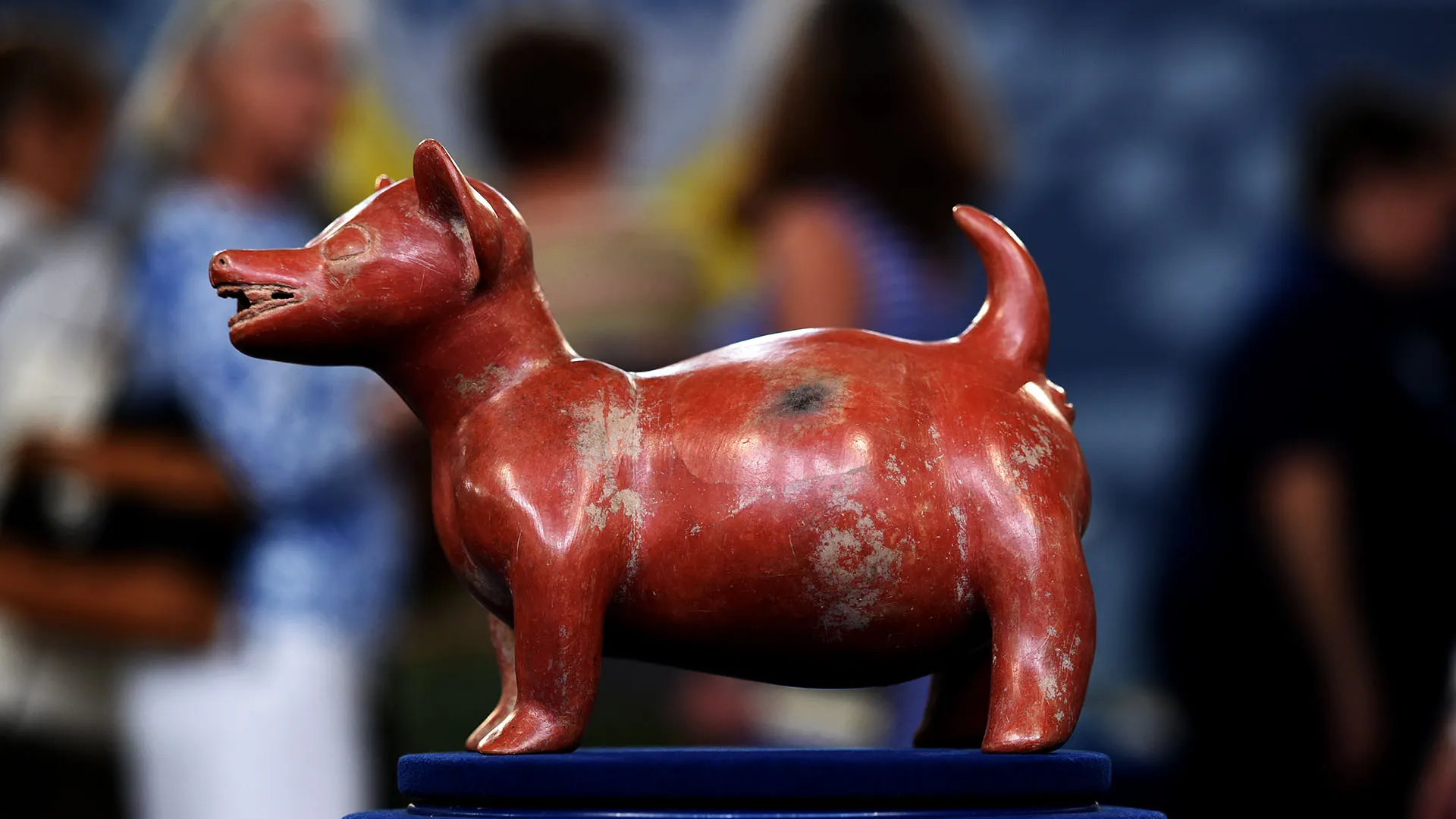
appraisal
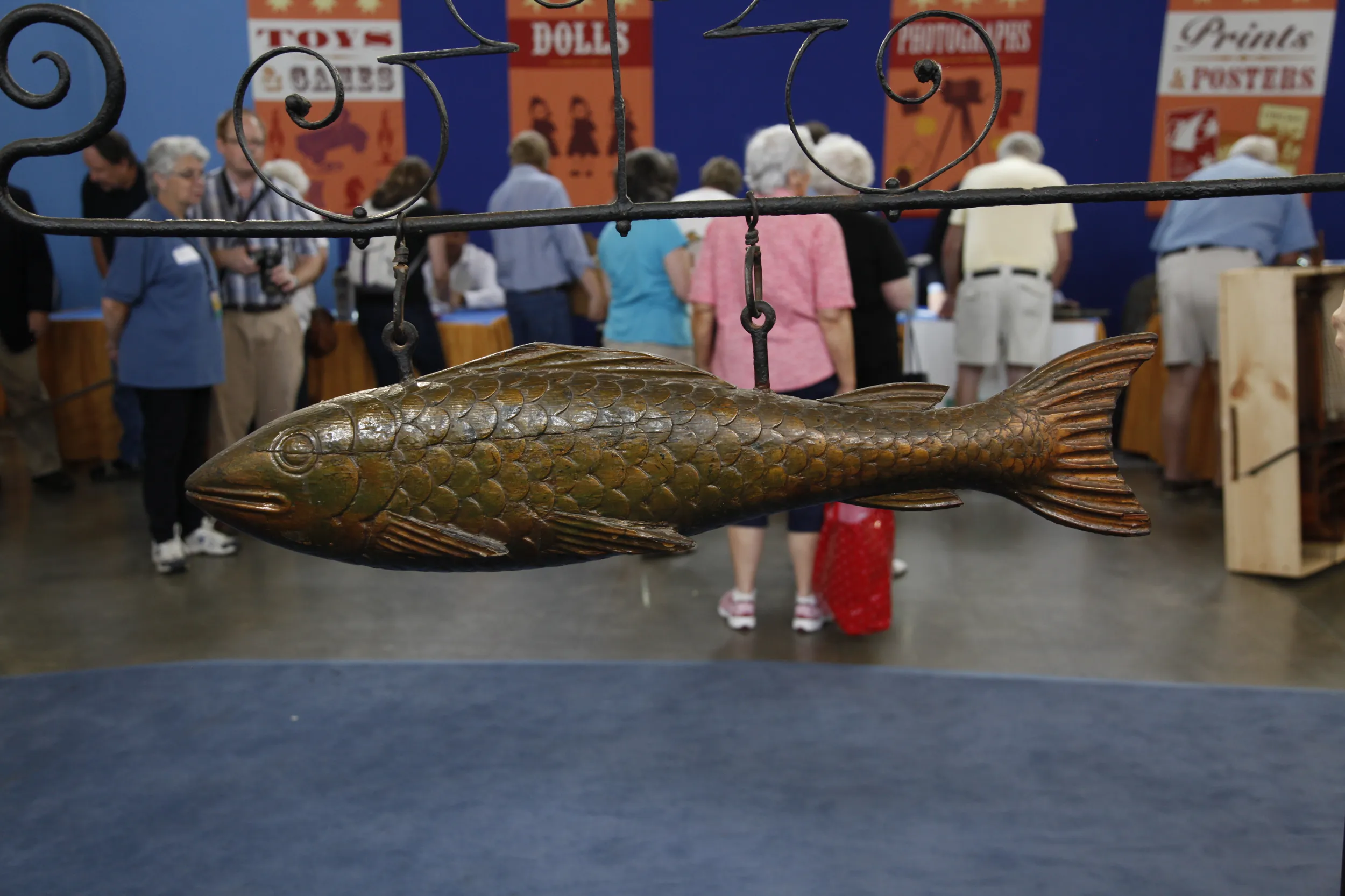
appraisal

appraisal
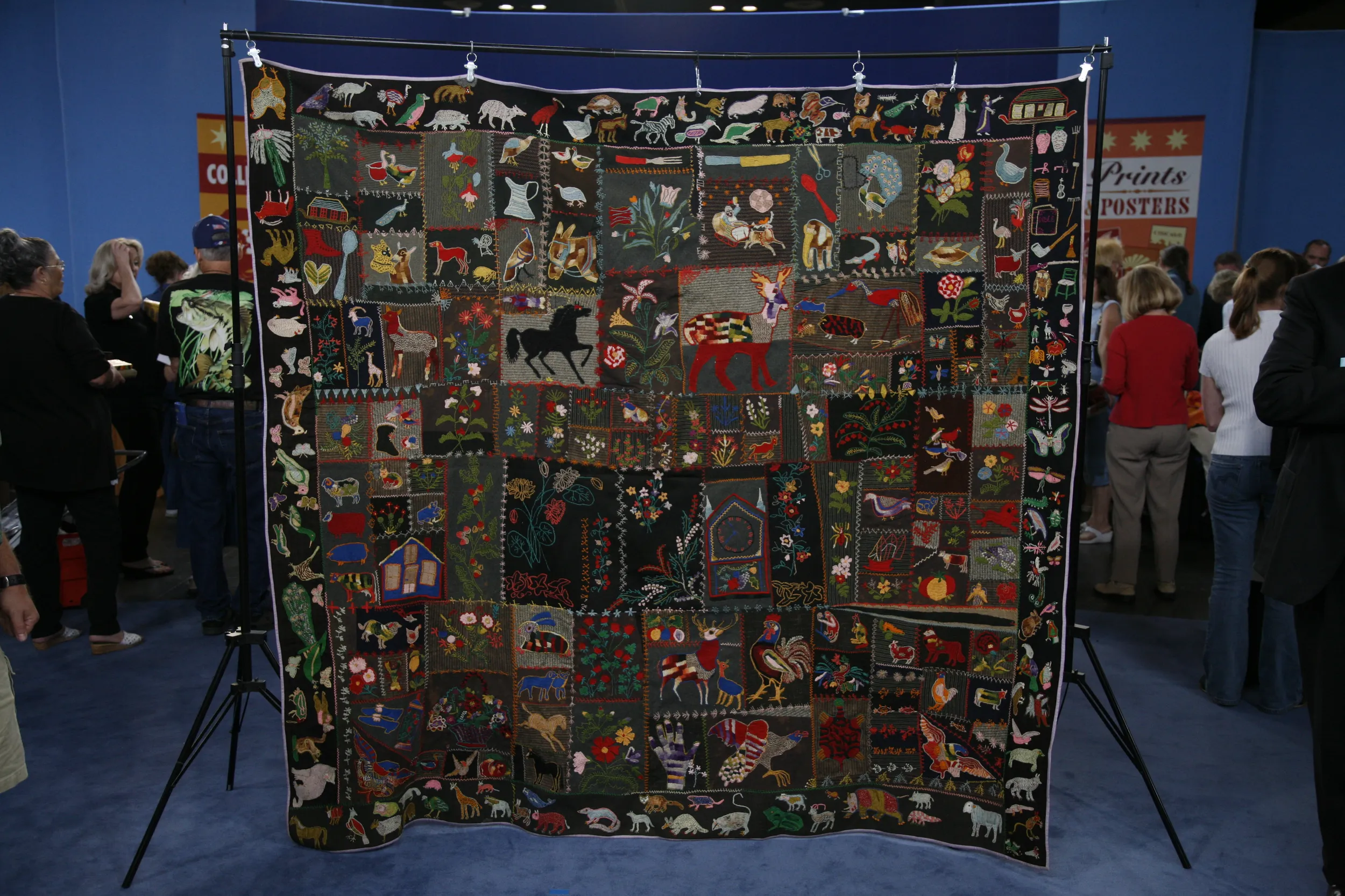
appraisal
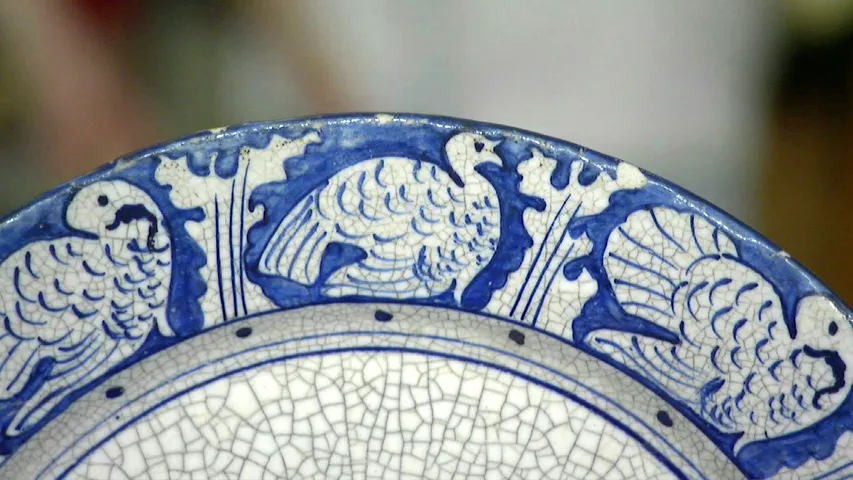
appraisal
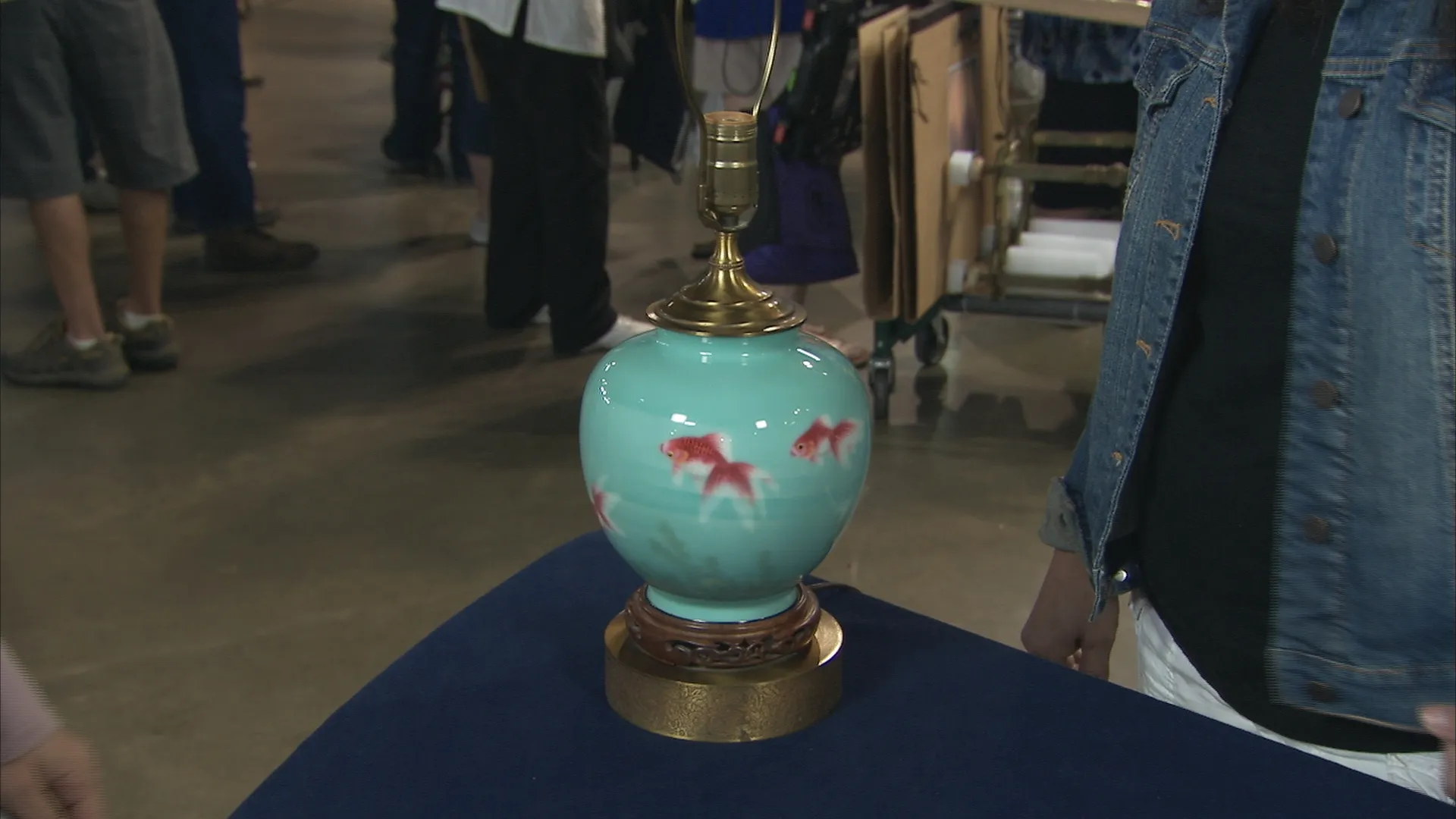
appraisal
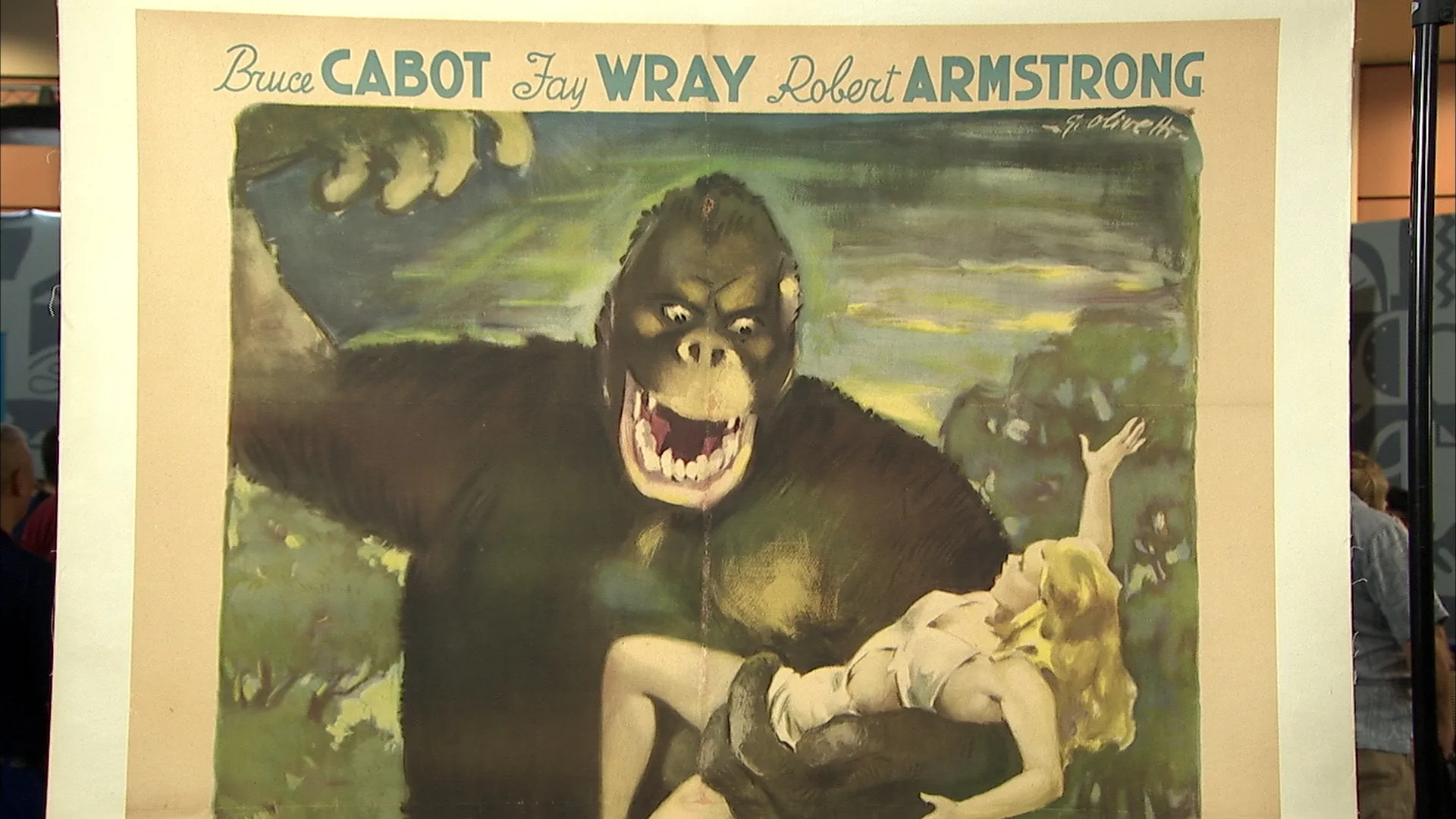
appraisal
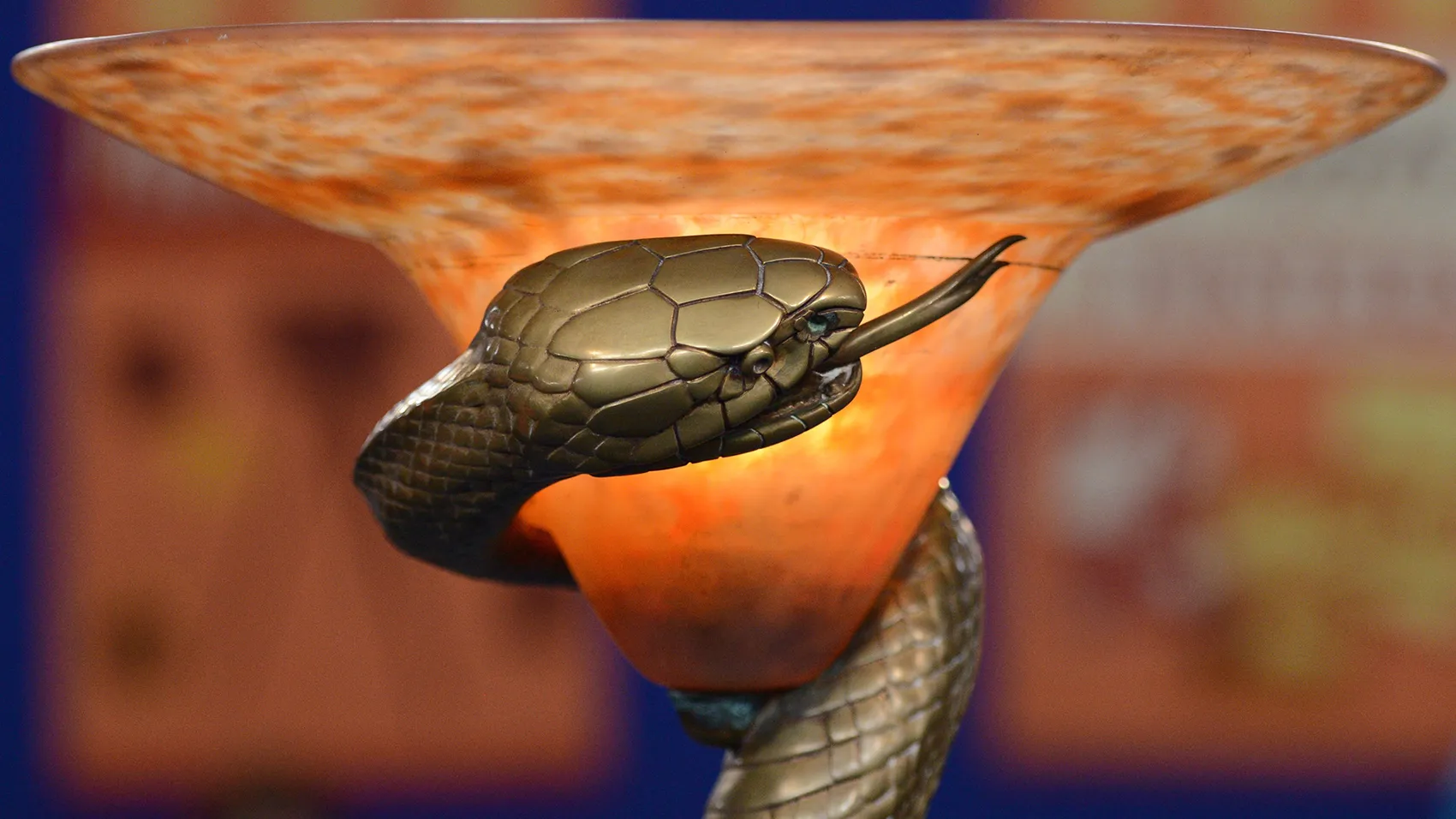
appraisal
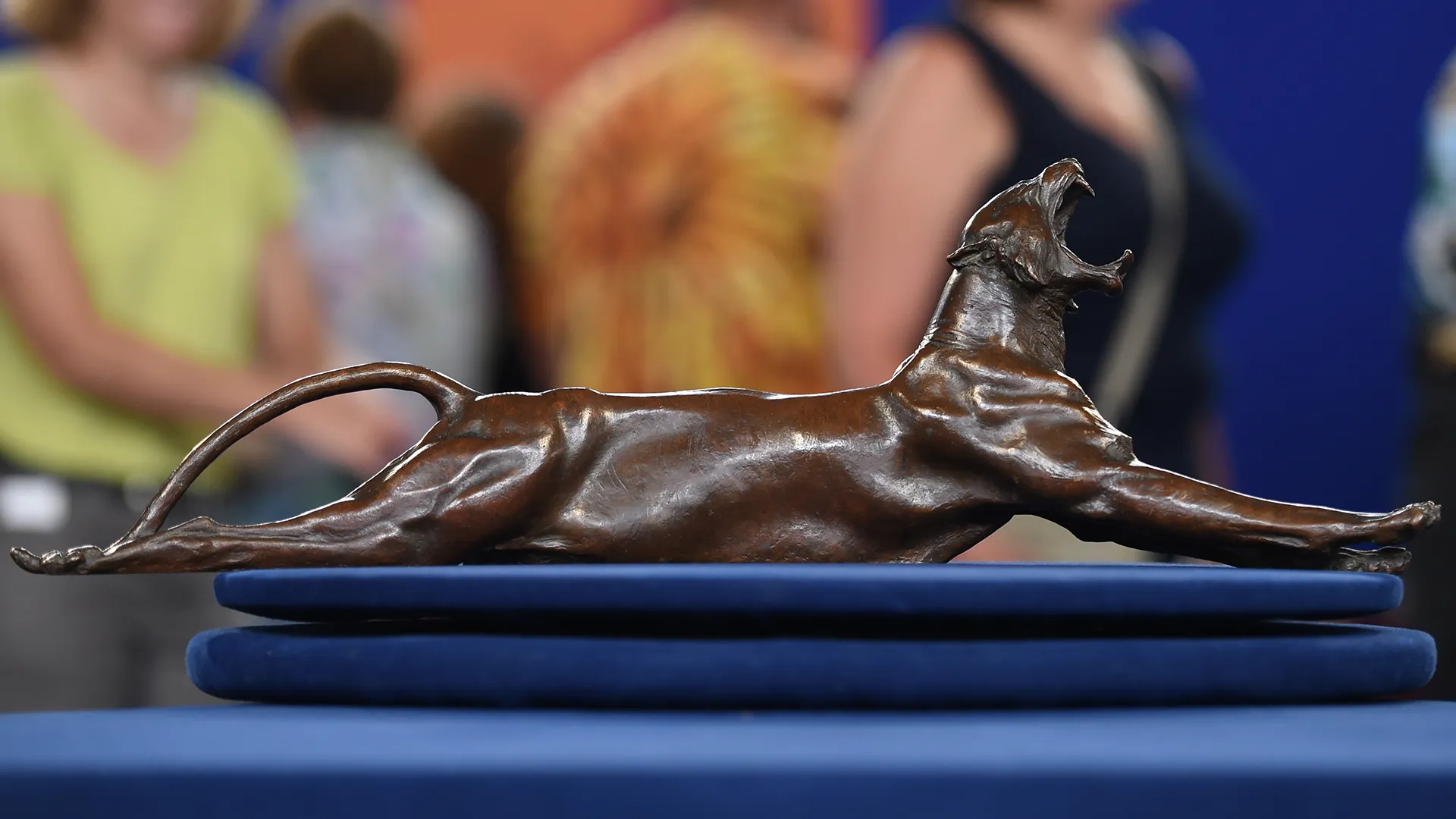
appraisal

appraisal
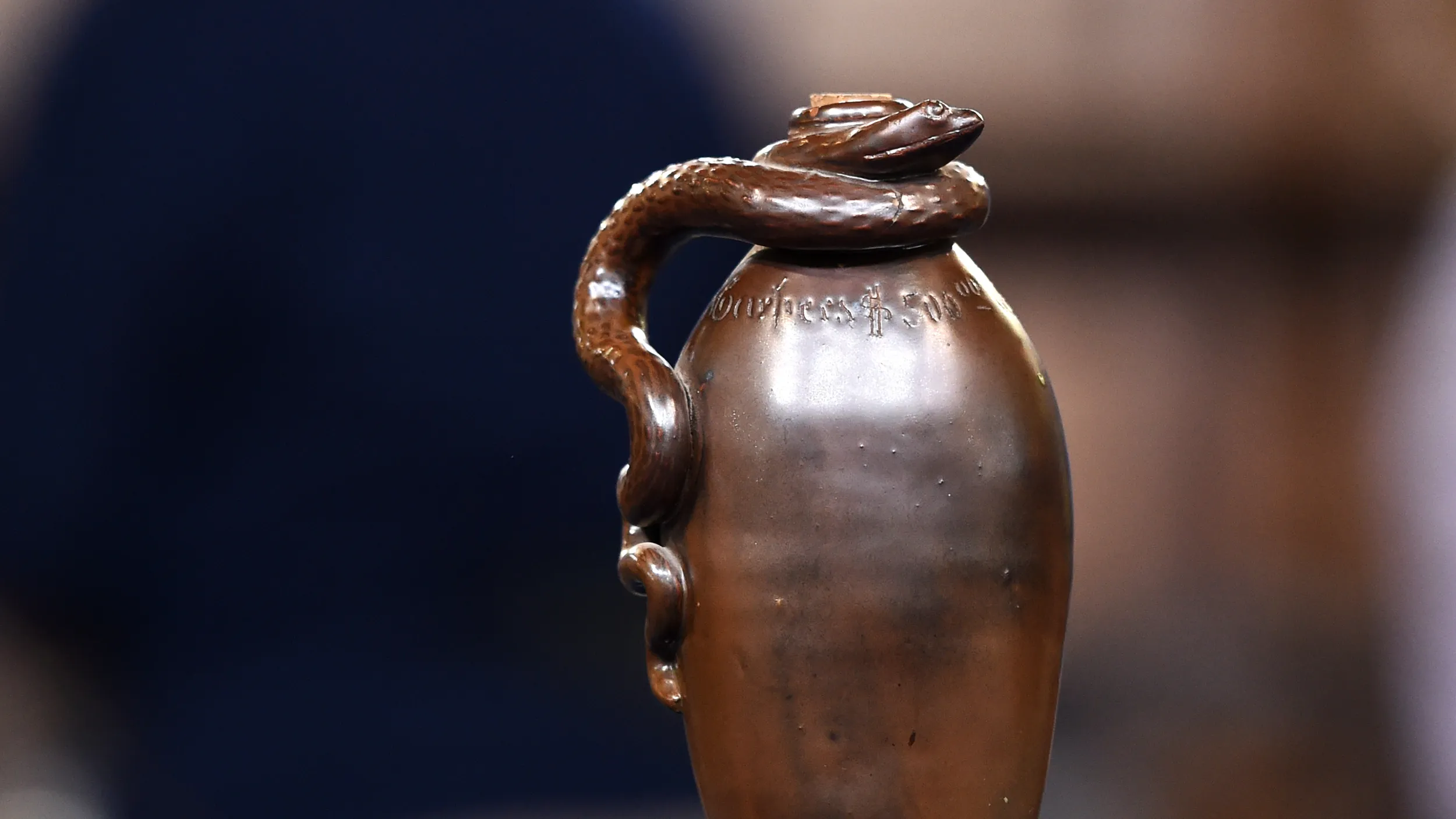
appraisal

appraisal
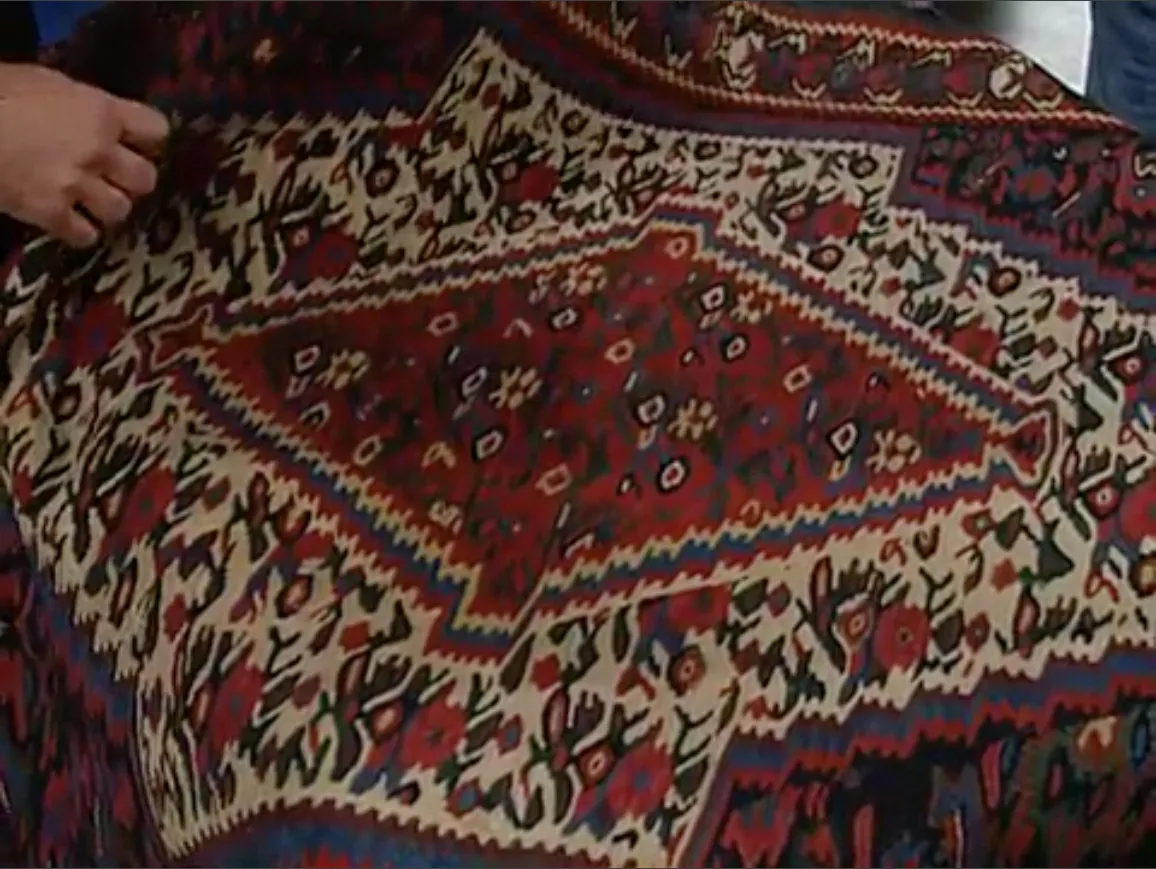
appraisal

appraisal
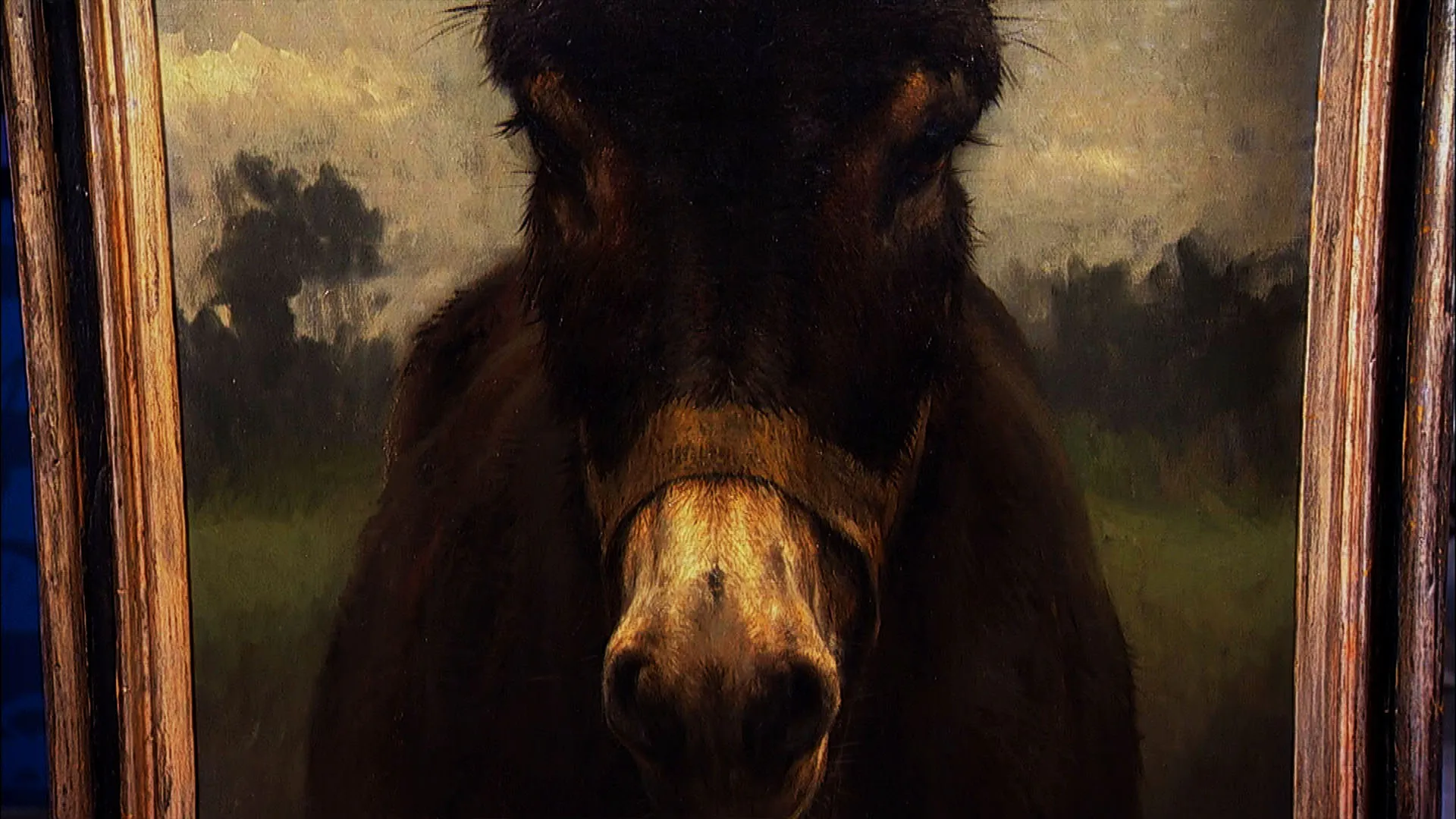
appraisal

appraisal
appraisal
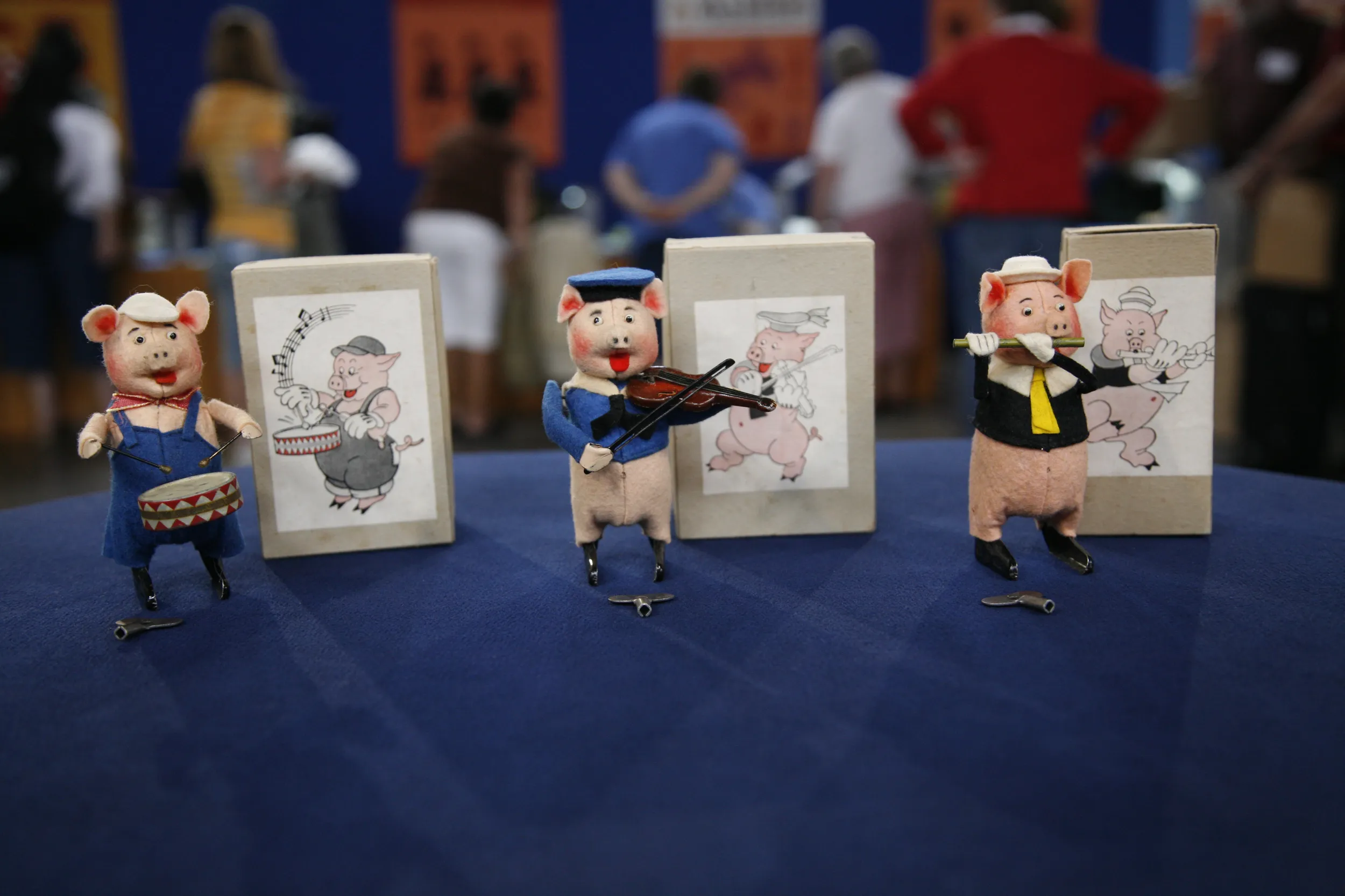
appraisal
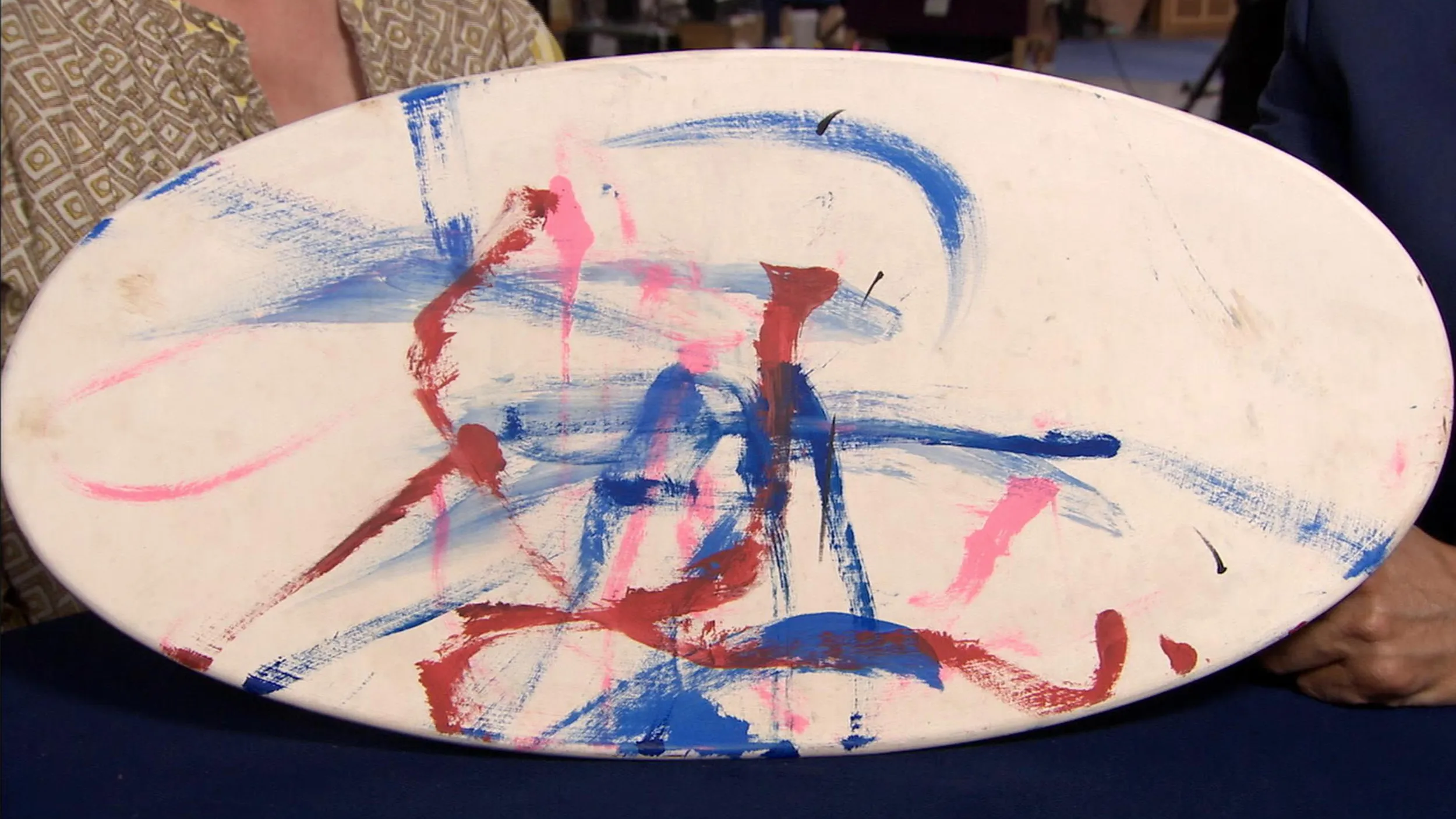
appraisal

appraisal
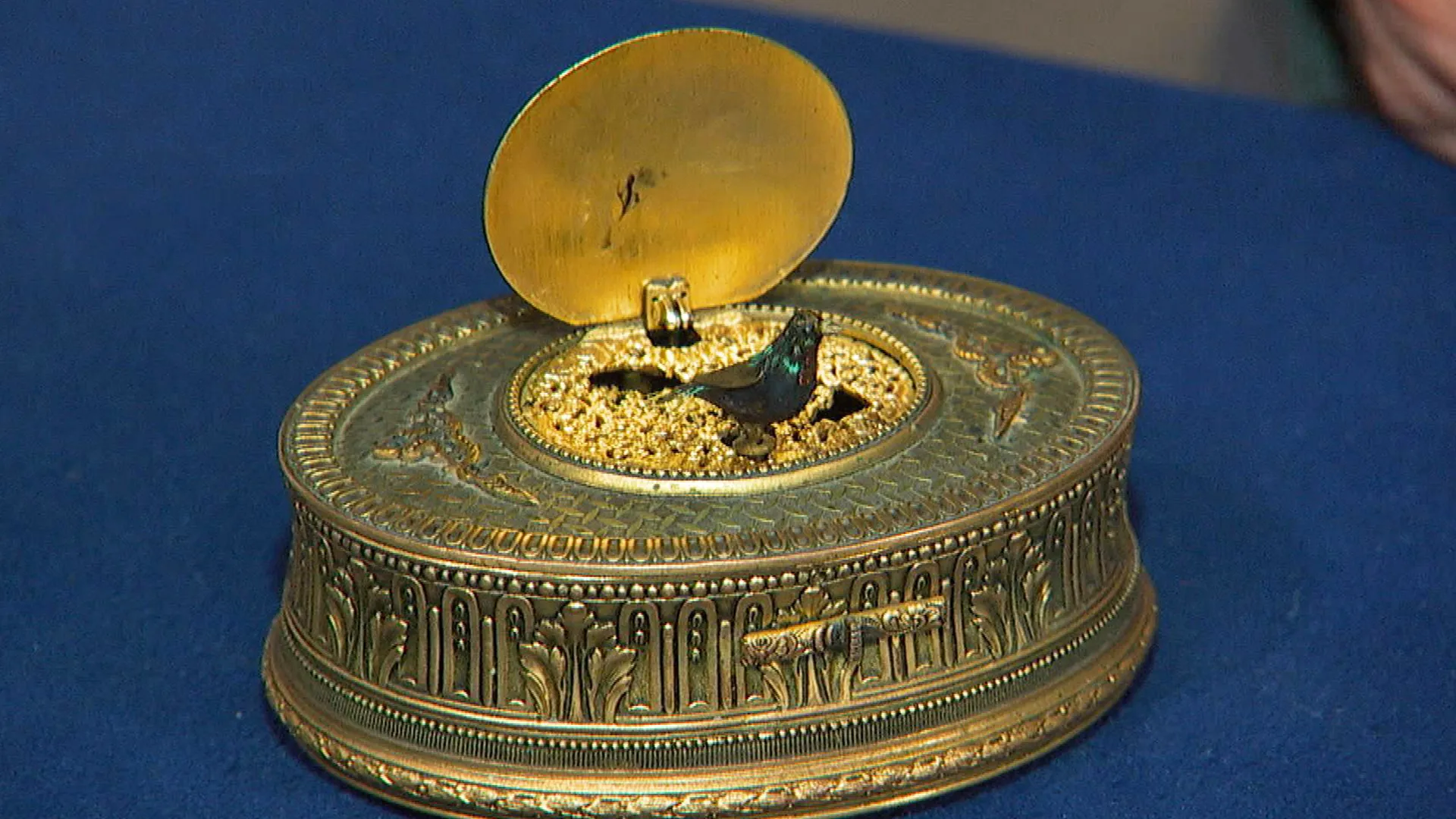
appraisal

appraisal

appraisal
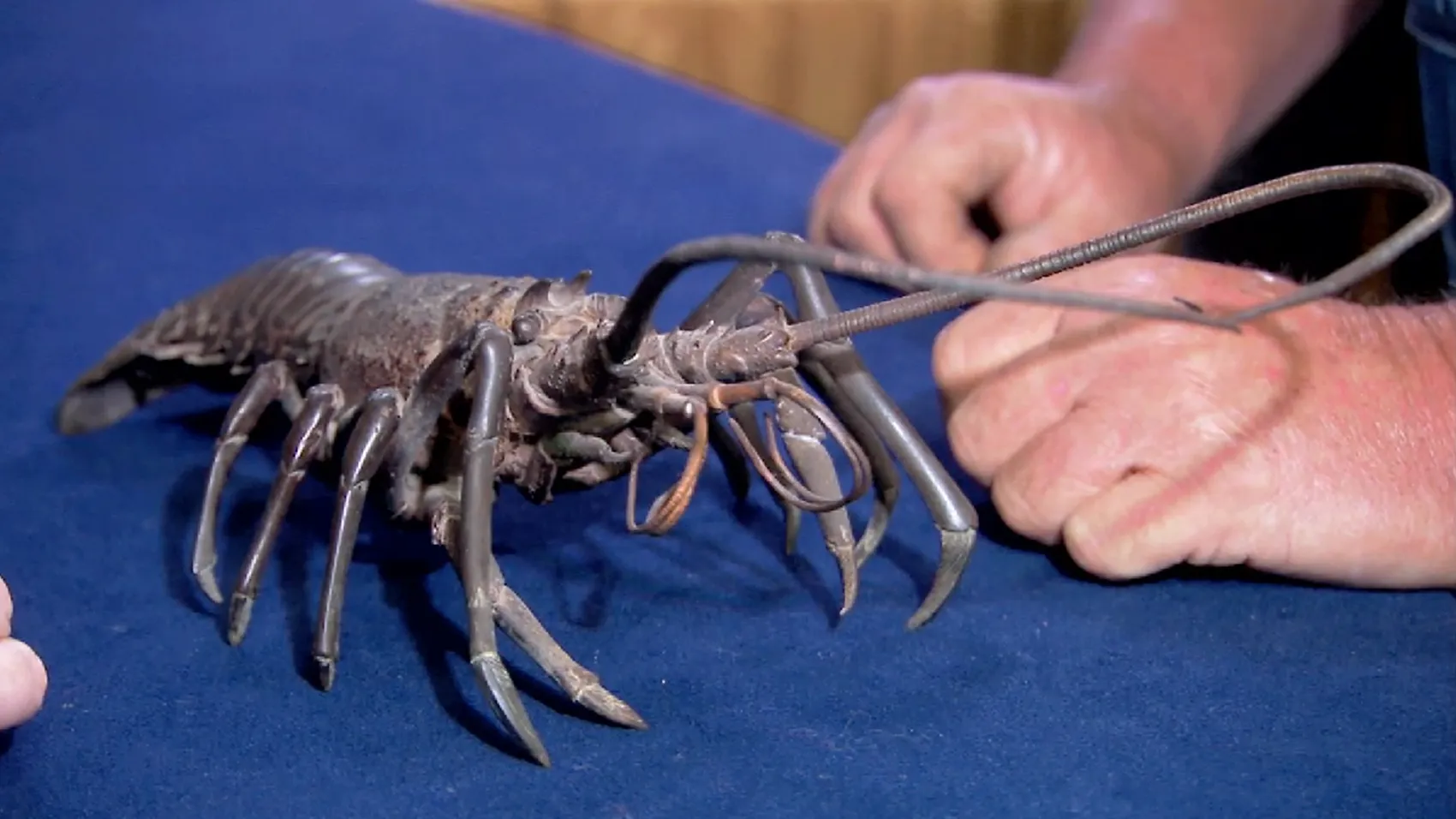
appraisal
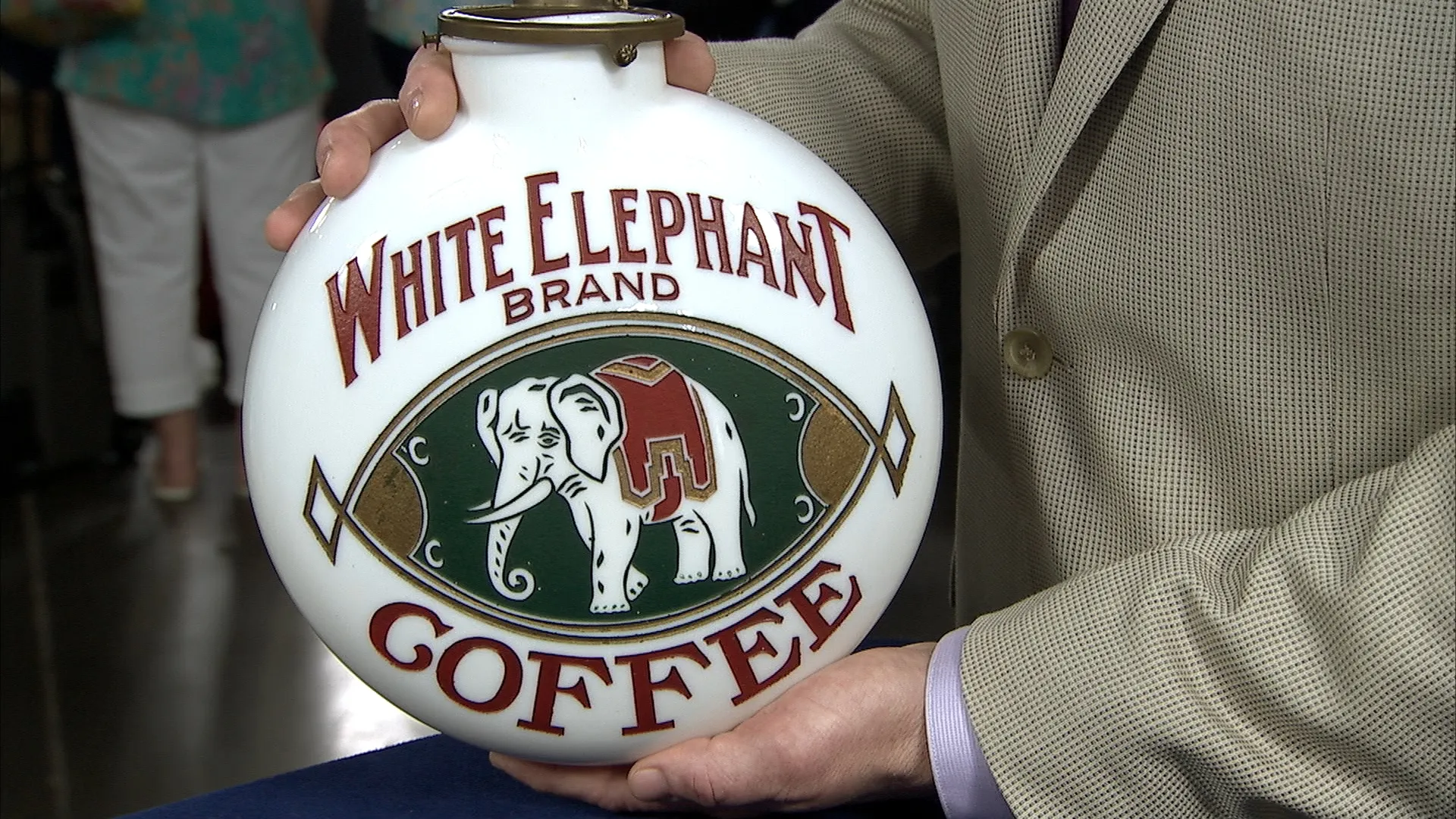
appraisal
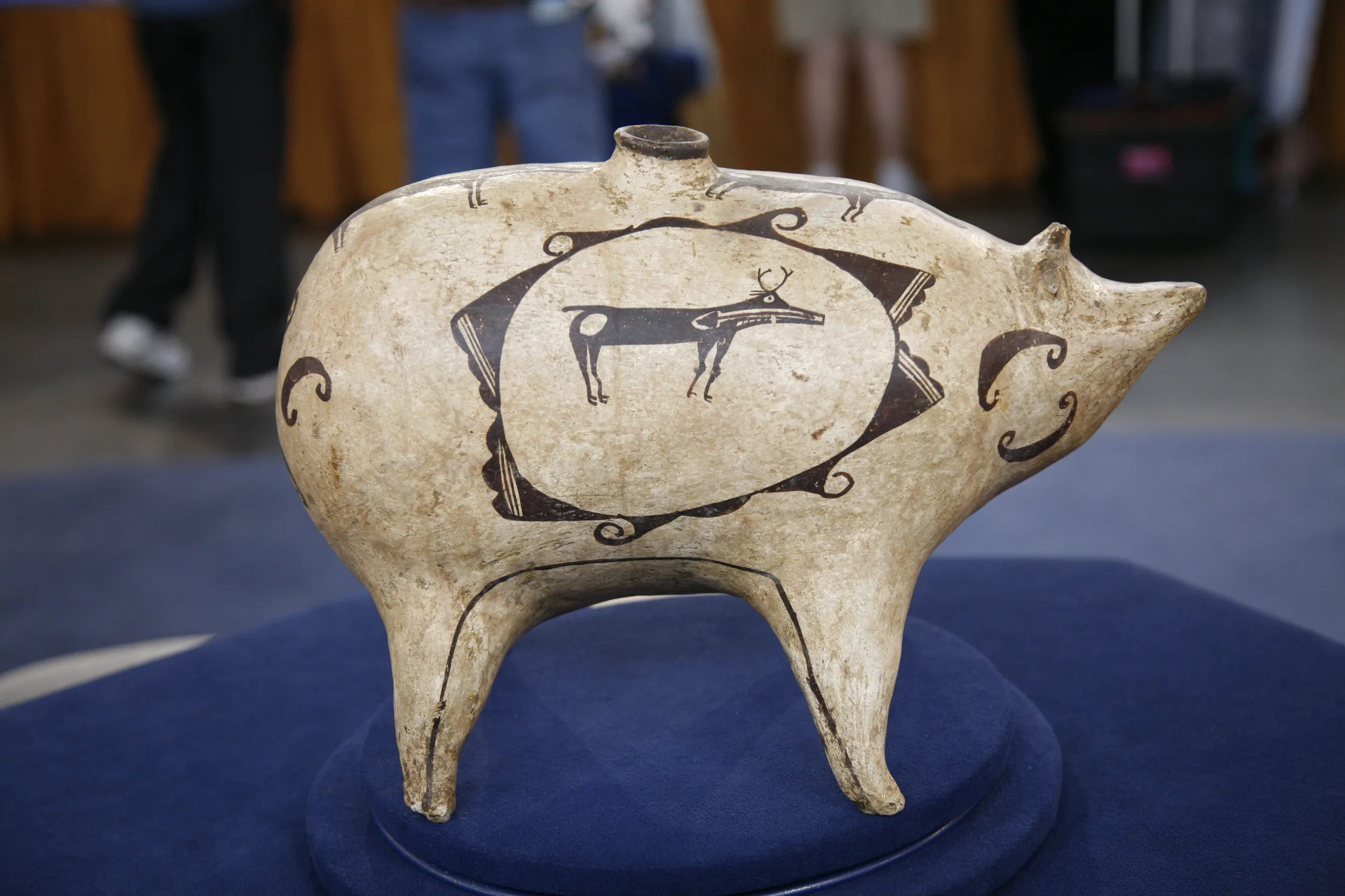
appraisal
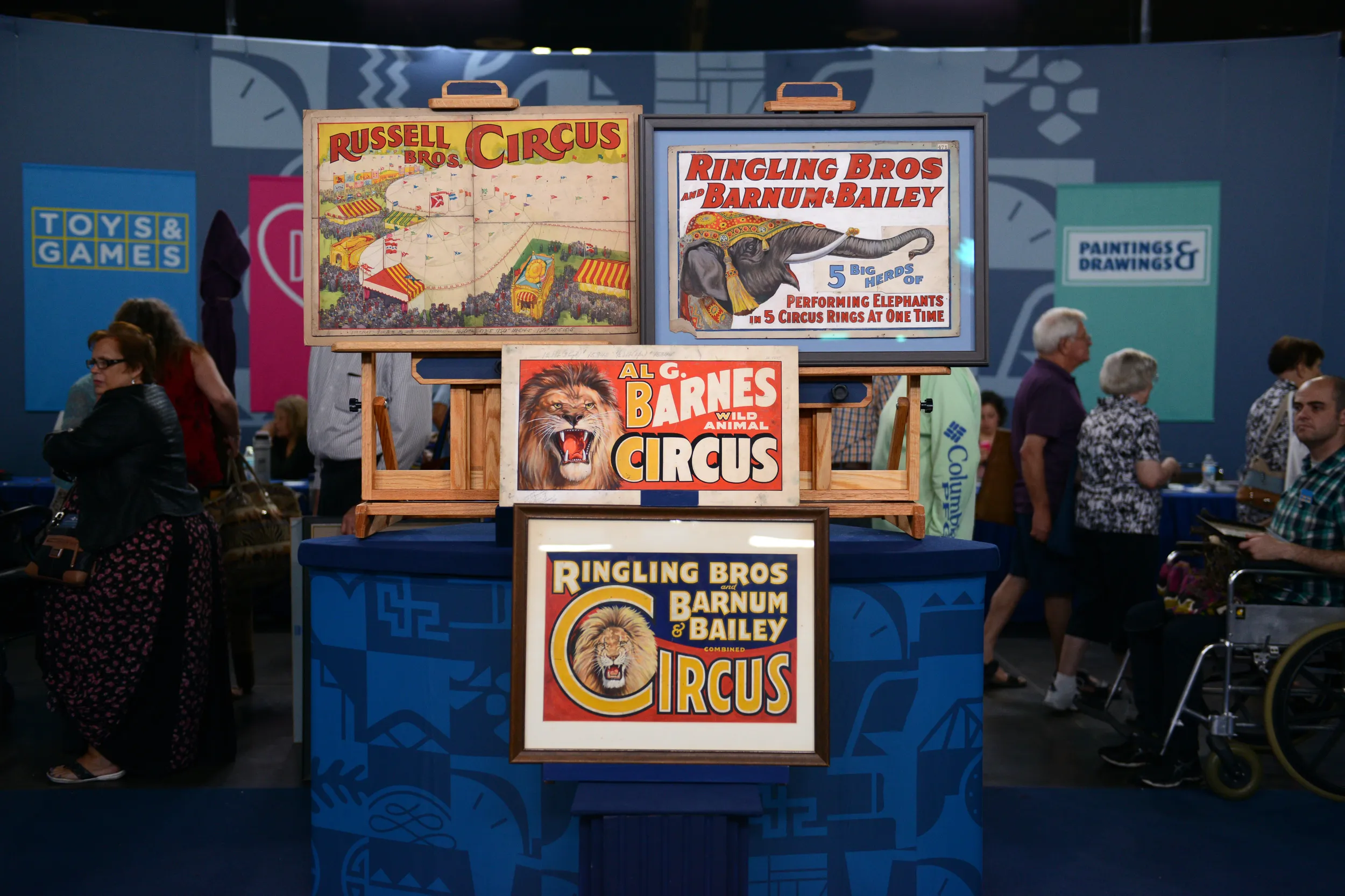
appraisal
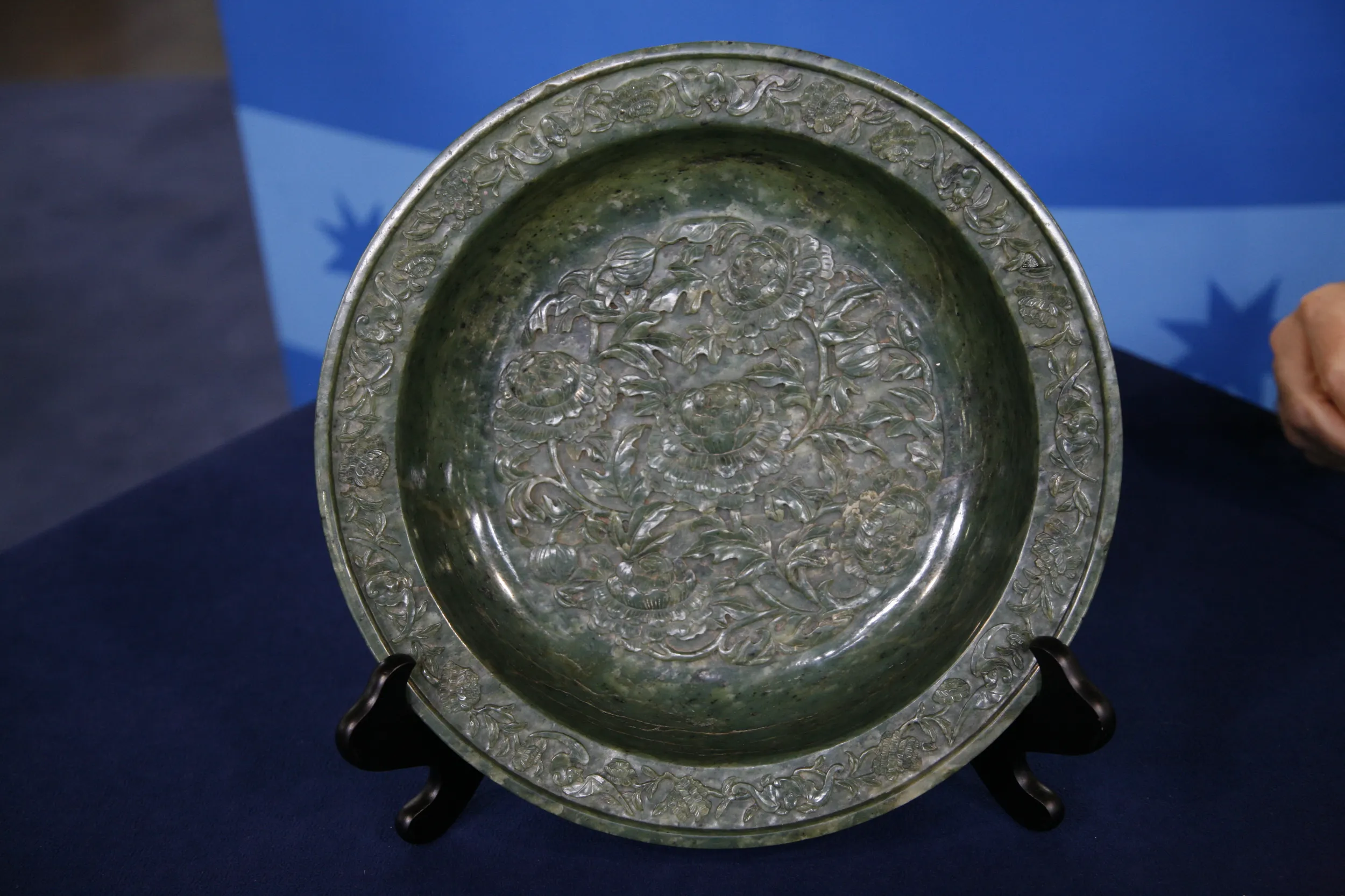
appraisal
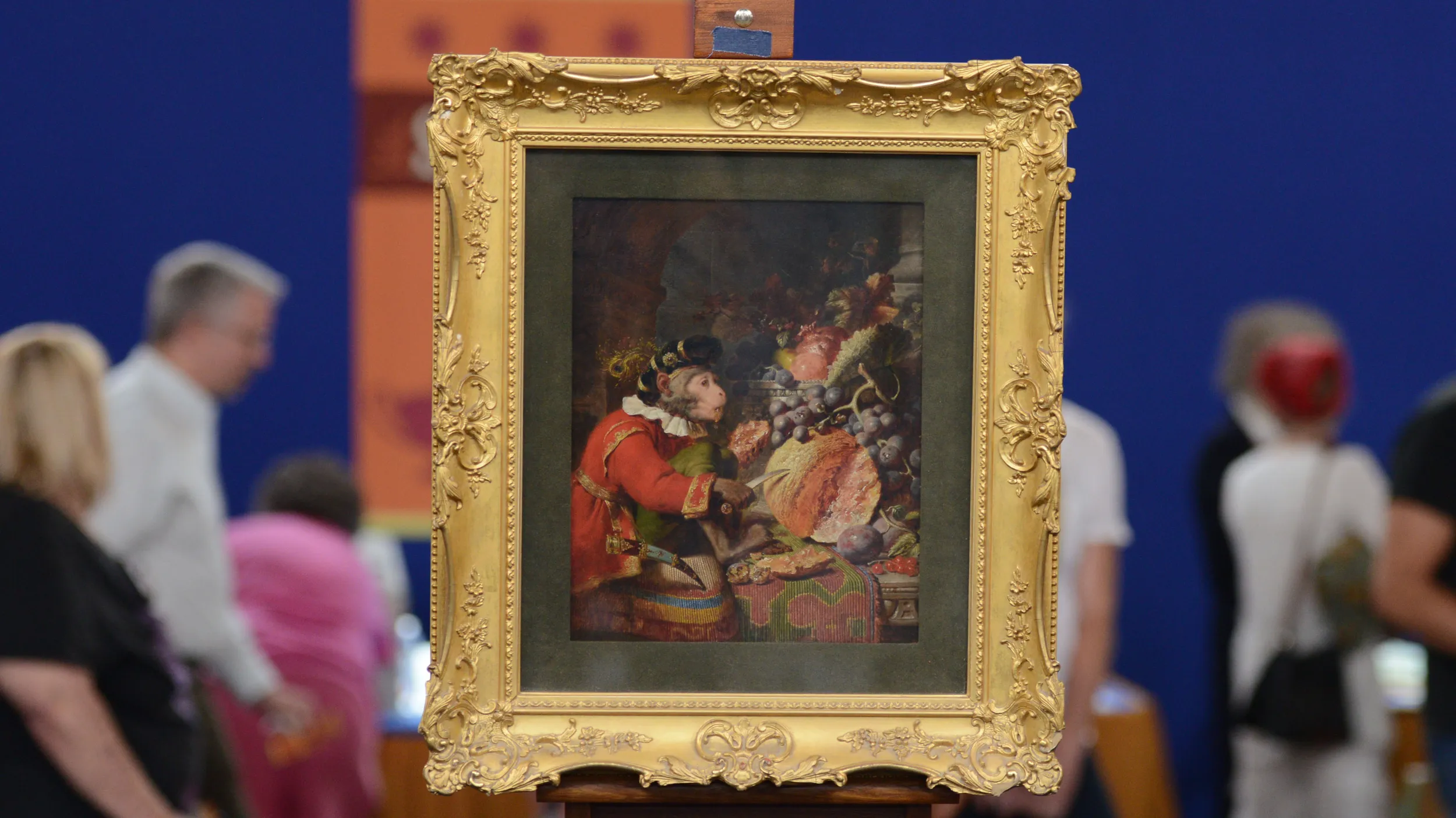
appraisal


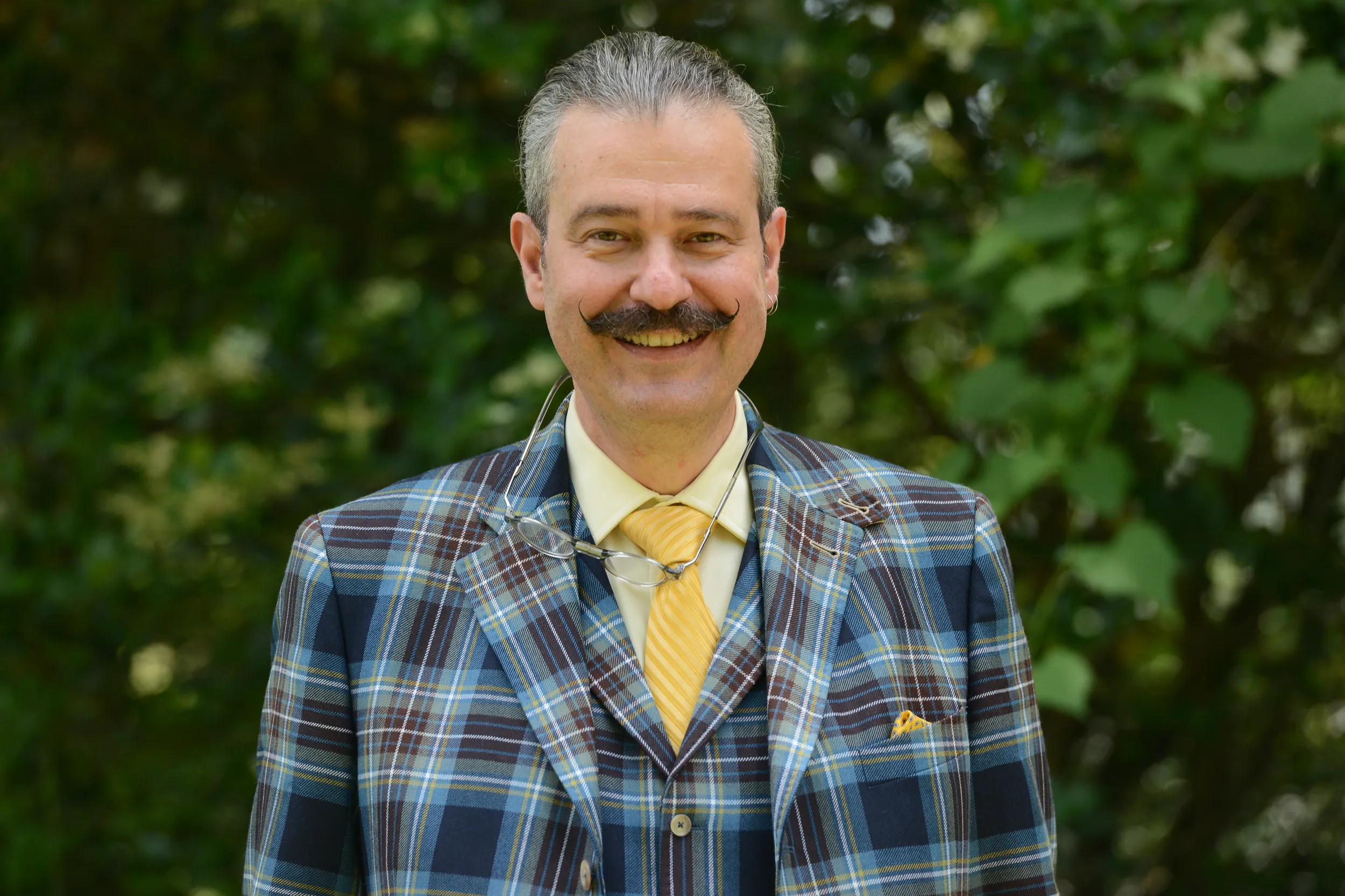












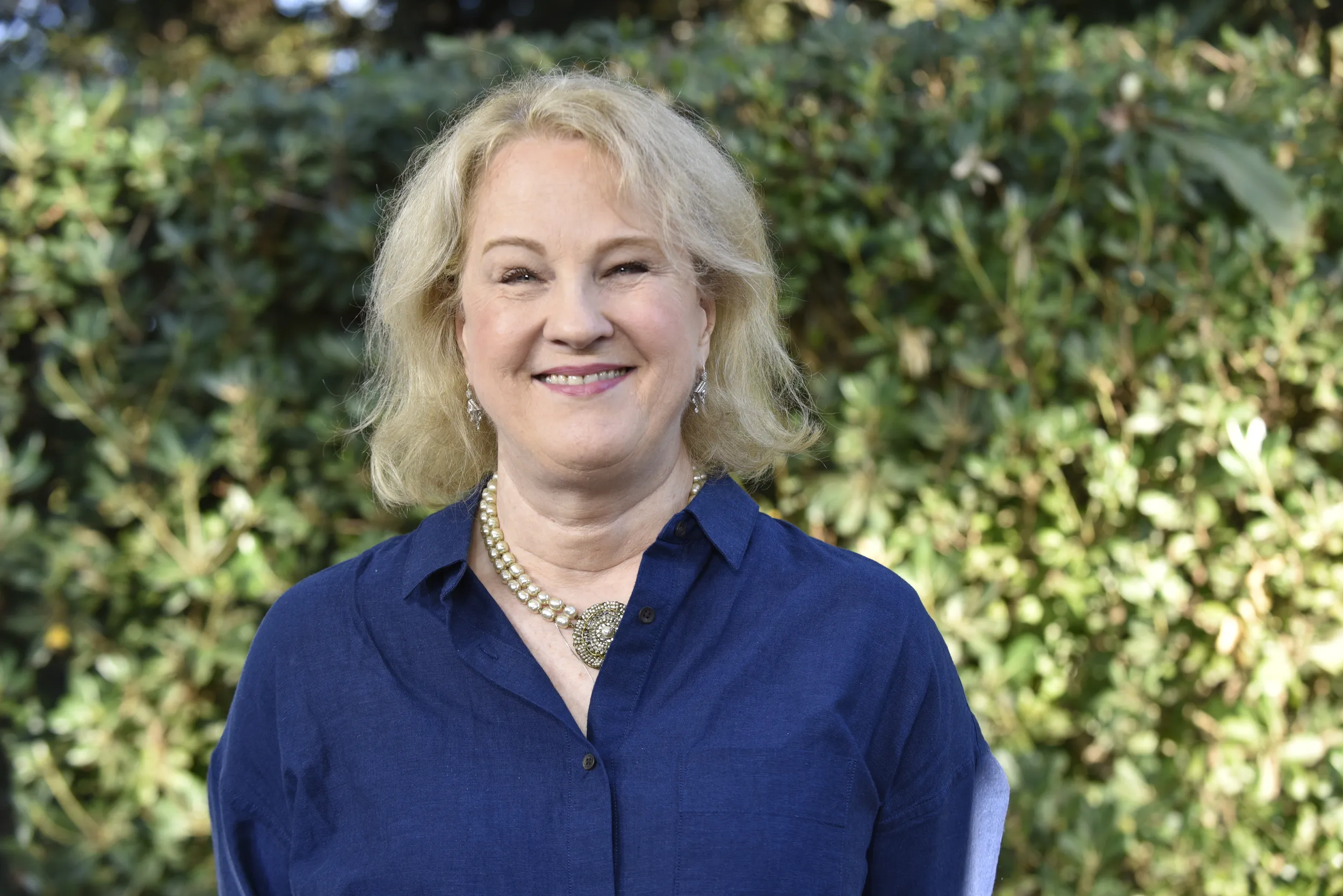


A weekly collection of previews, videos, articles, interviews, and more!
Funding for ANTIQUES ROADSHOW is provided by Ancestry and American Cruise Lines. Additional funding is provided by public television viewers.
ANTIQUES ROADSHOW is a trademark of the BBC and is produced for PBS by GBH under license from BBC, Worldwide. PBS is a 501(c)(3) not-for-profit organization.
A weekly collection of previews, videos, articles, interviews, and more!
Test your appraisal knowledge in ROADSHOW's new game — Price Range!











